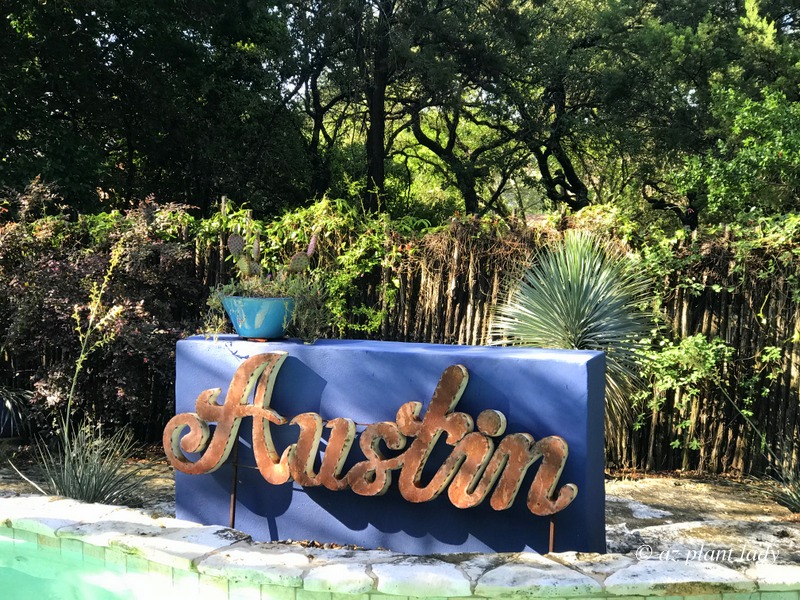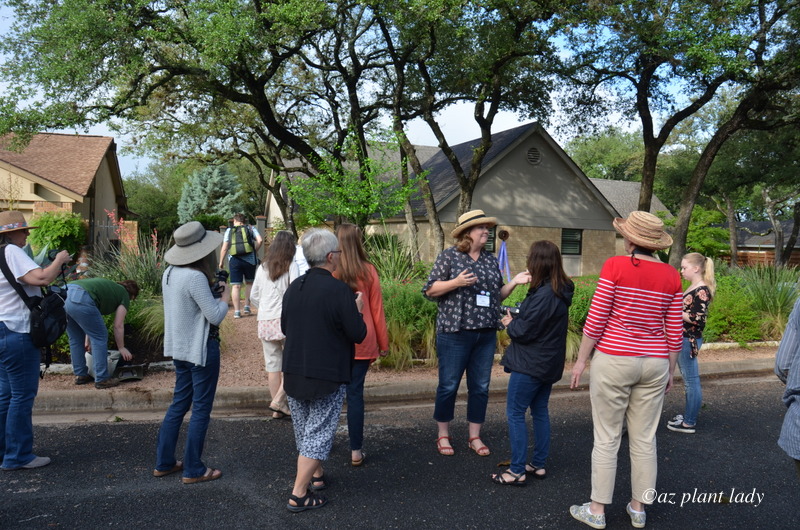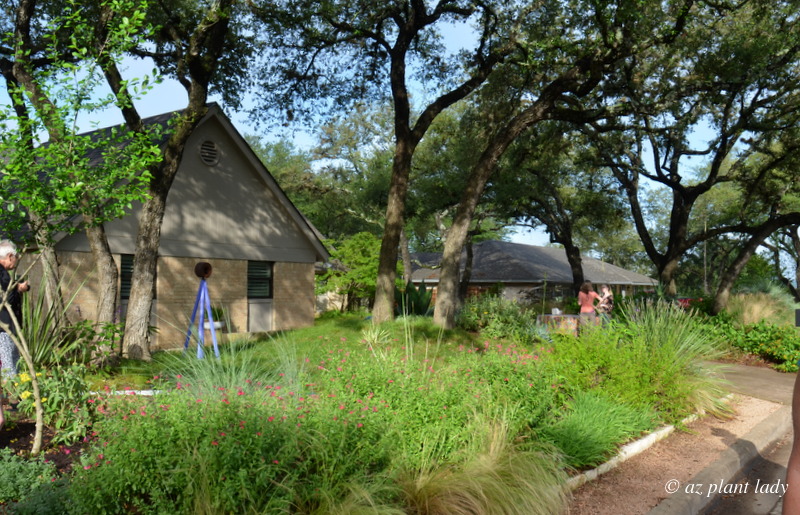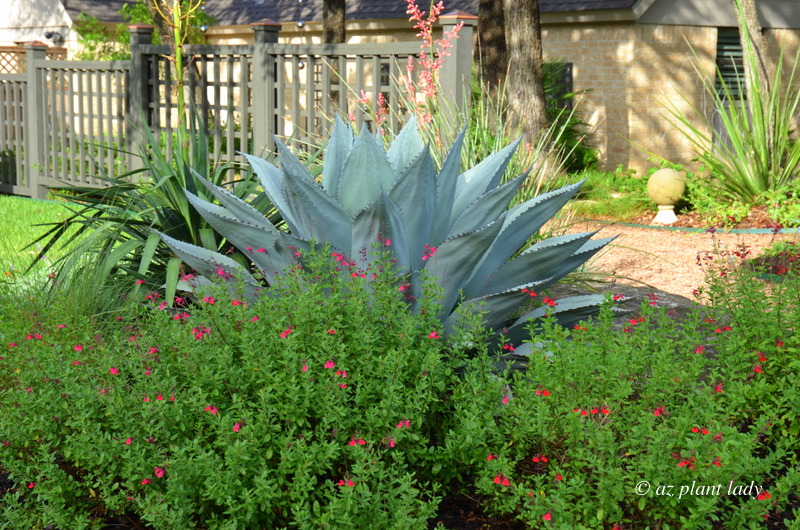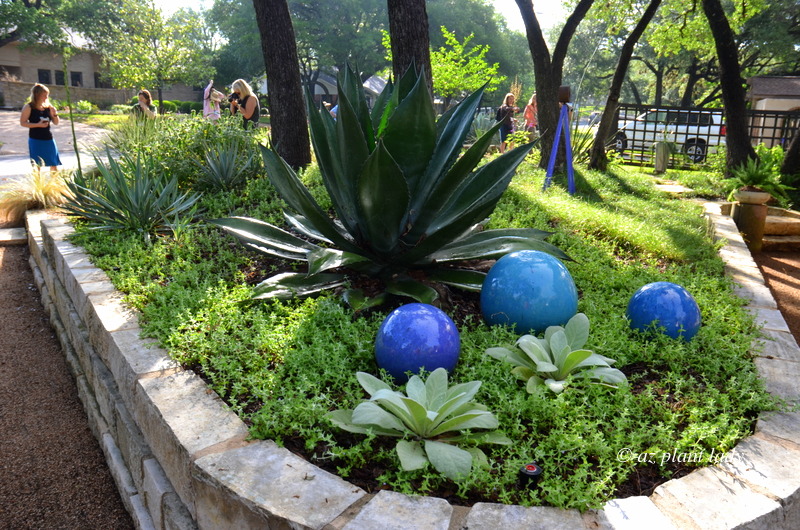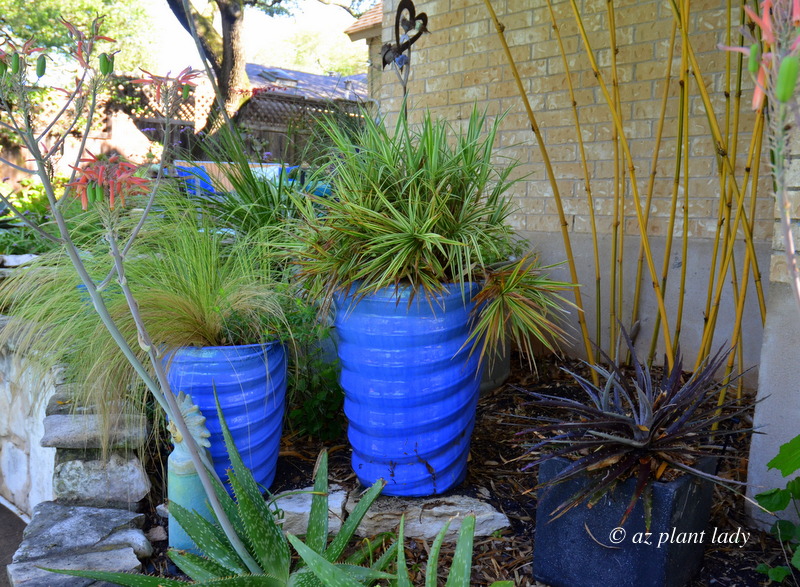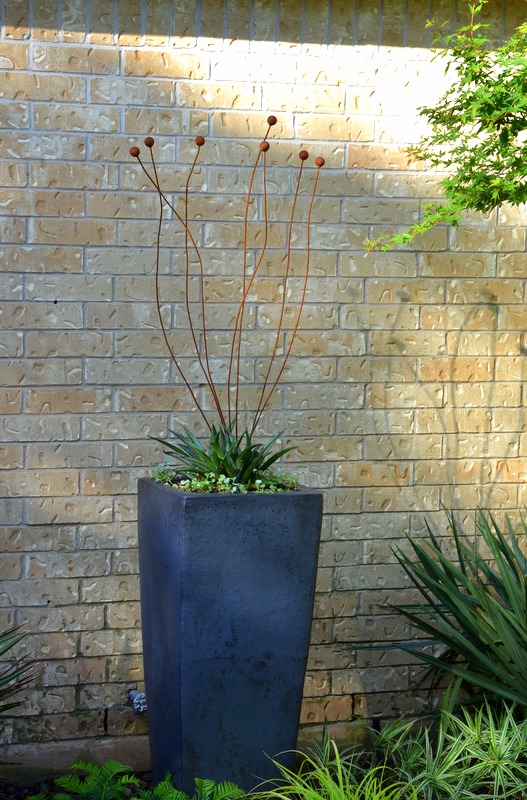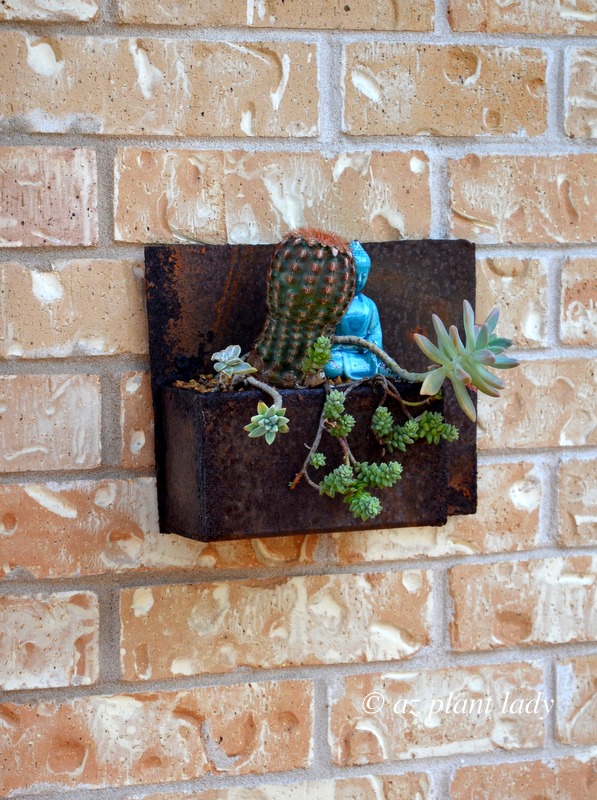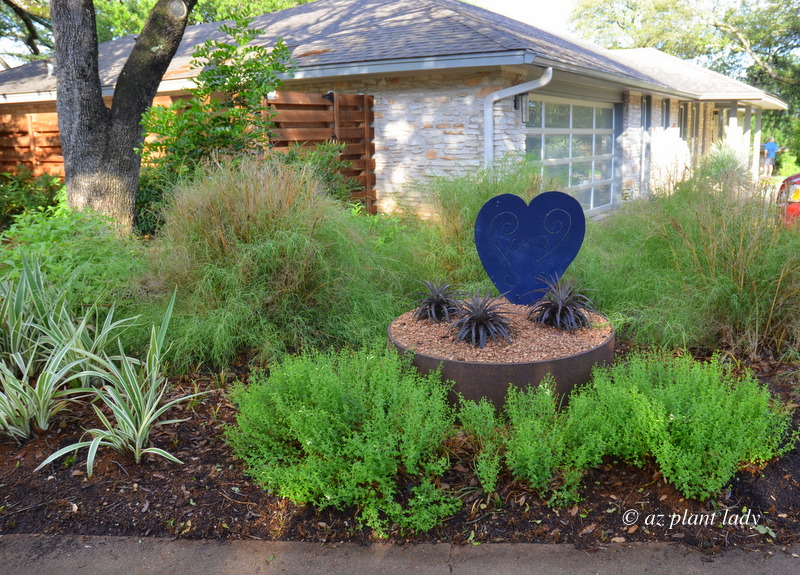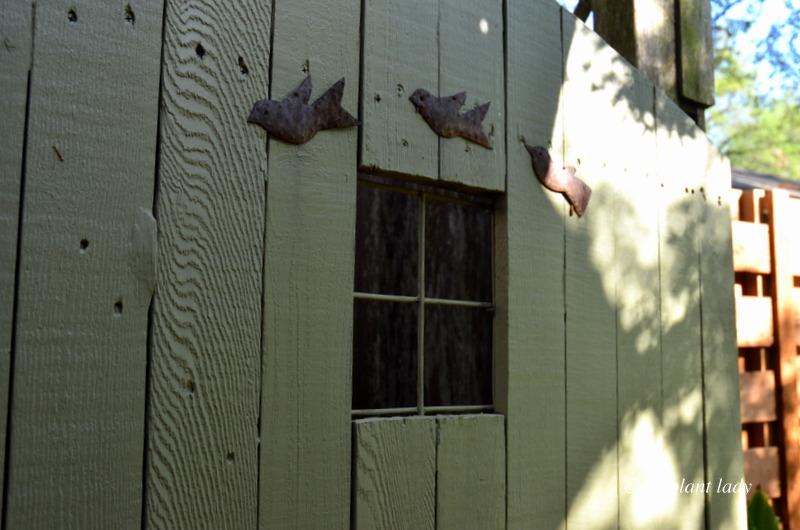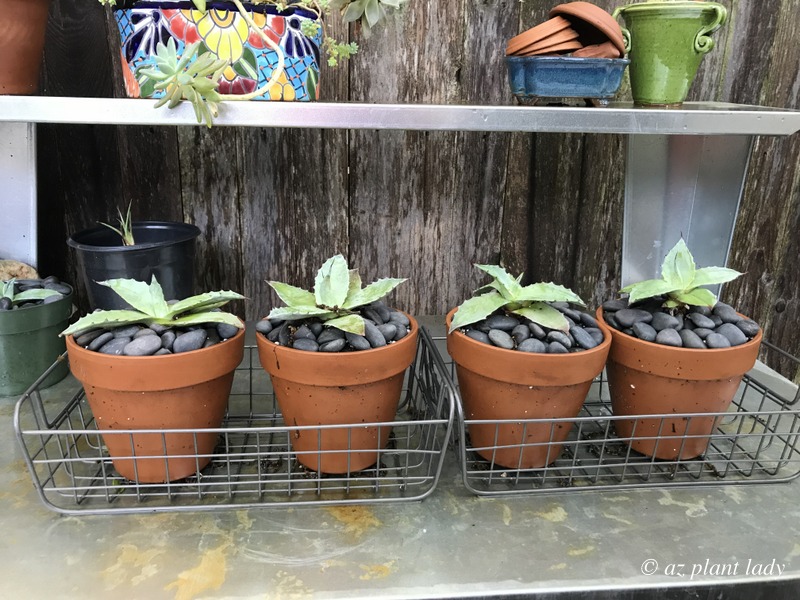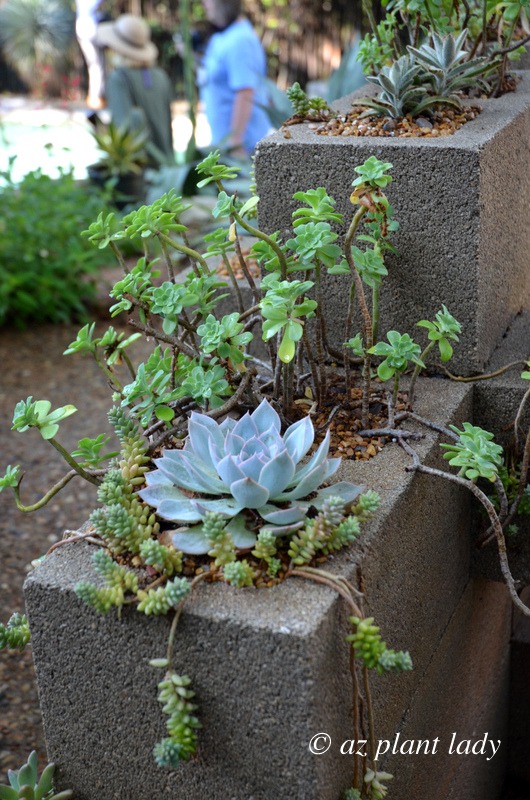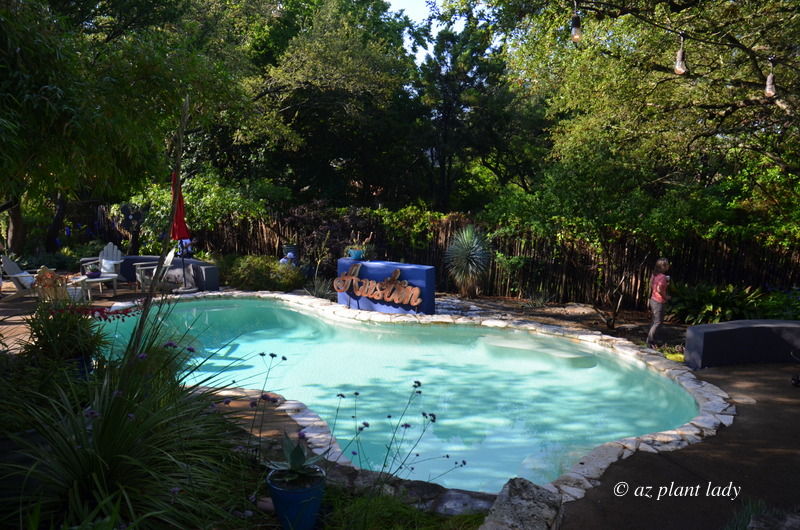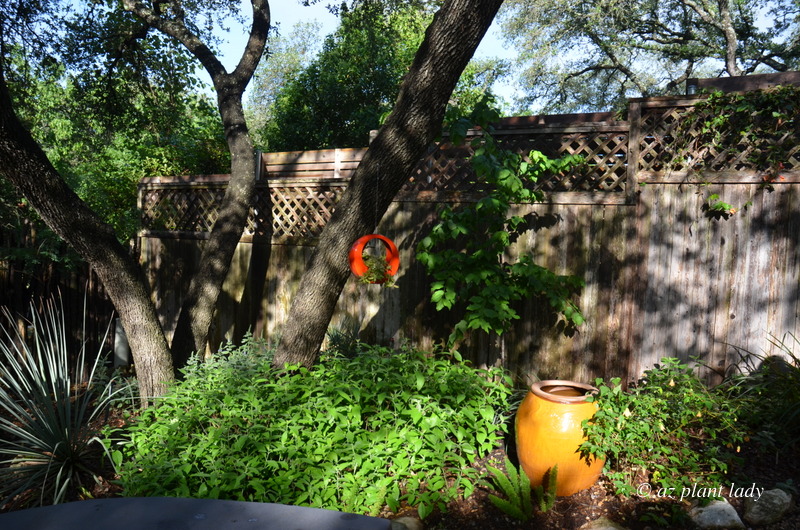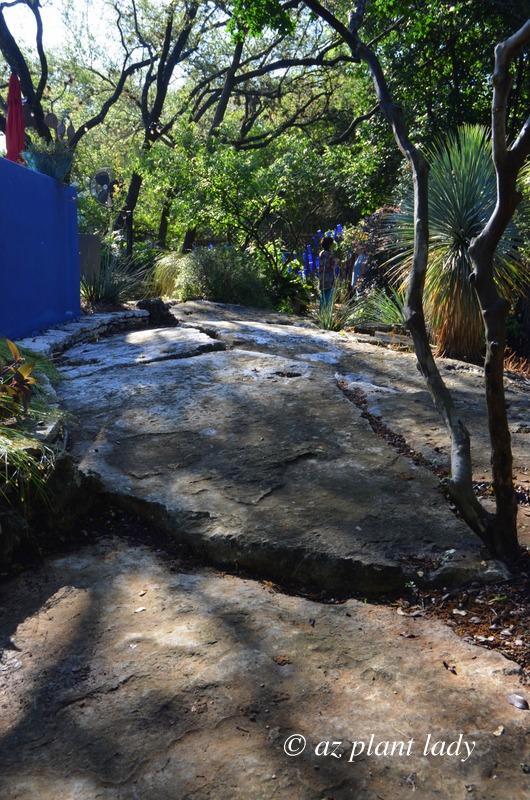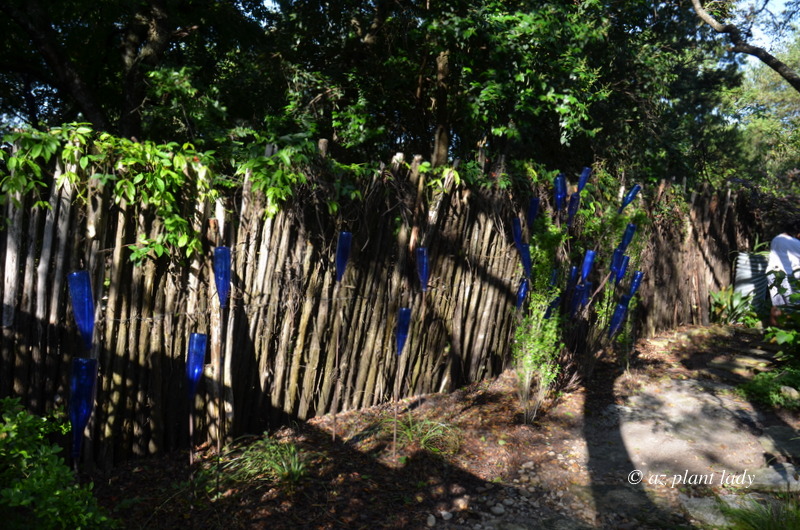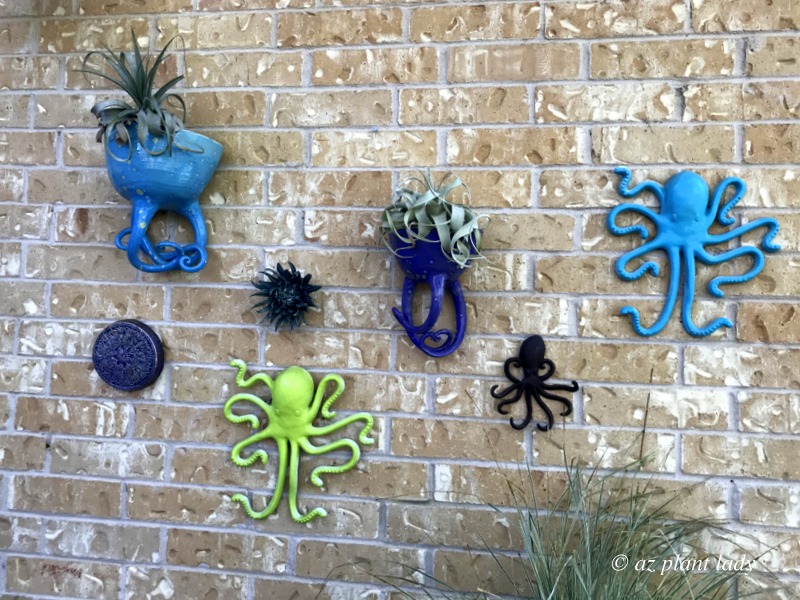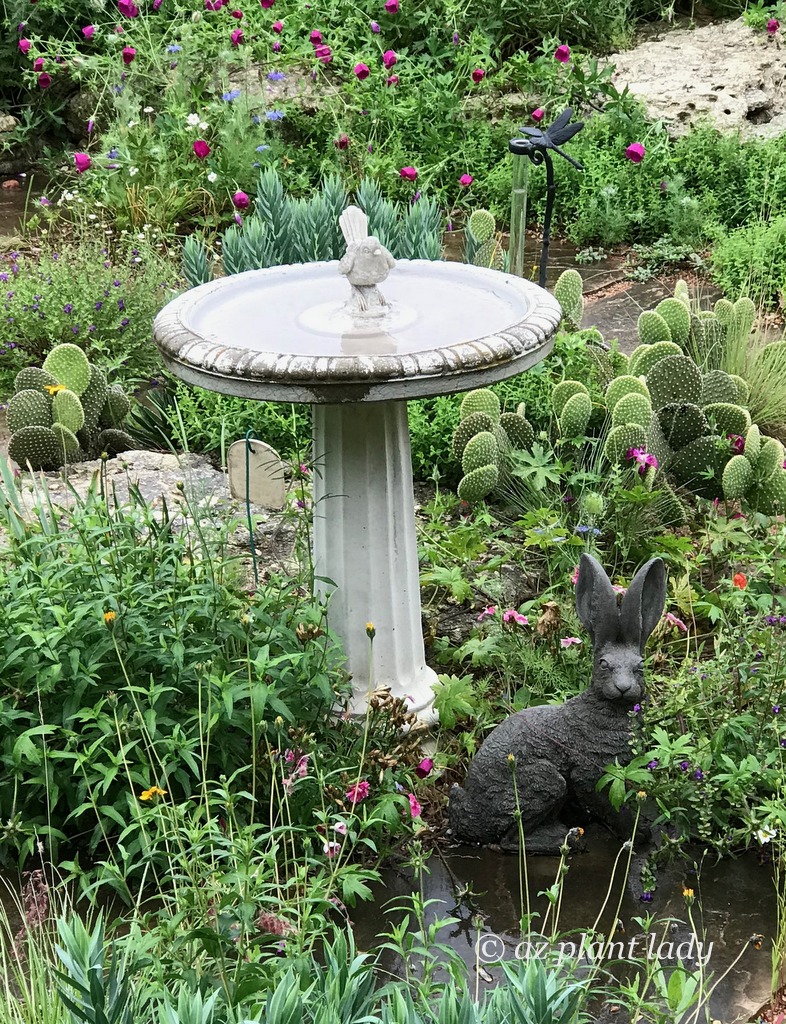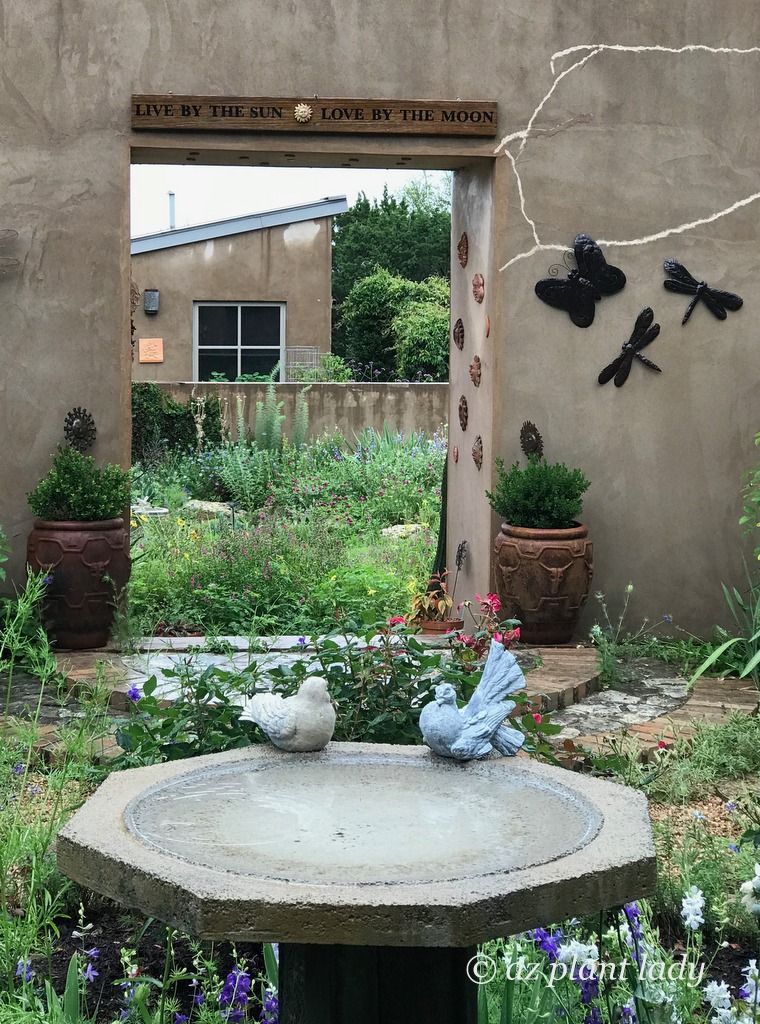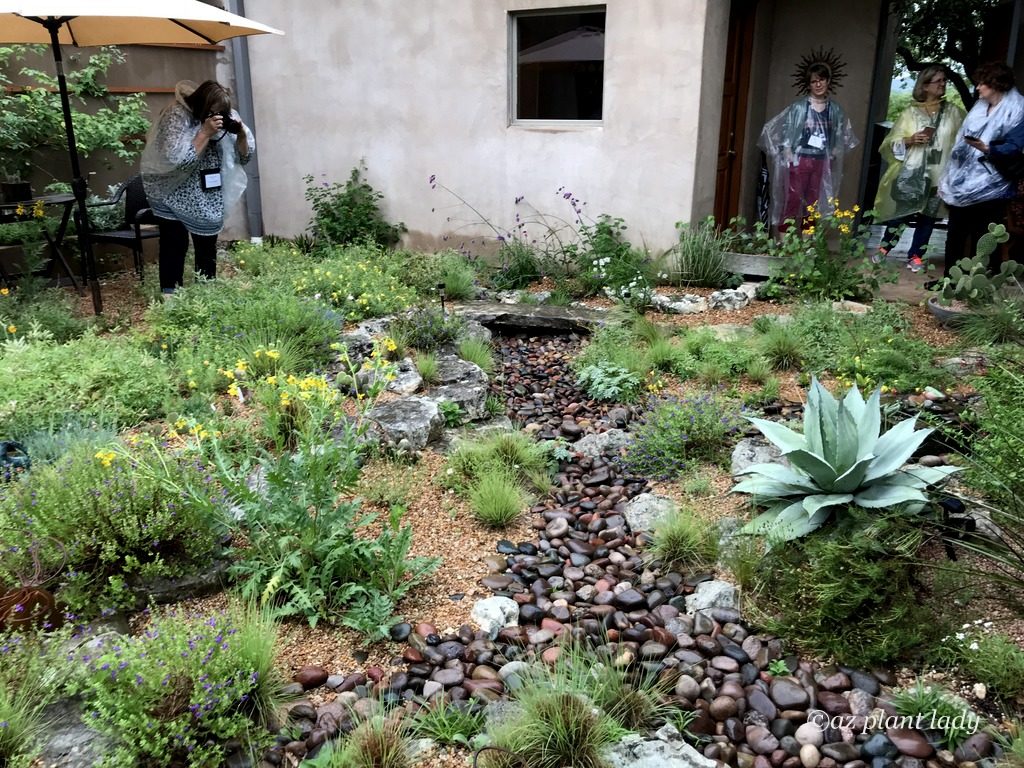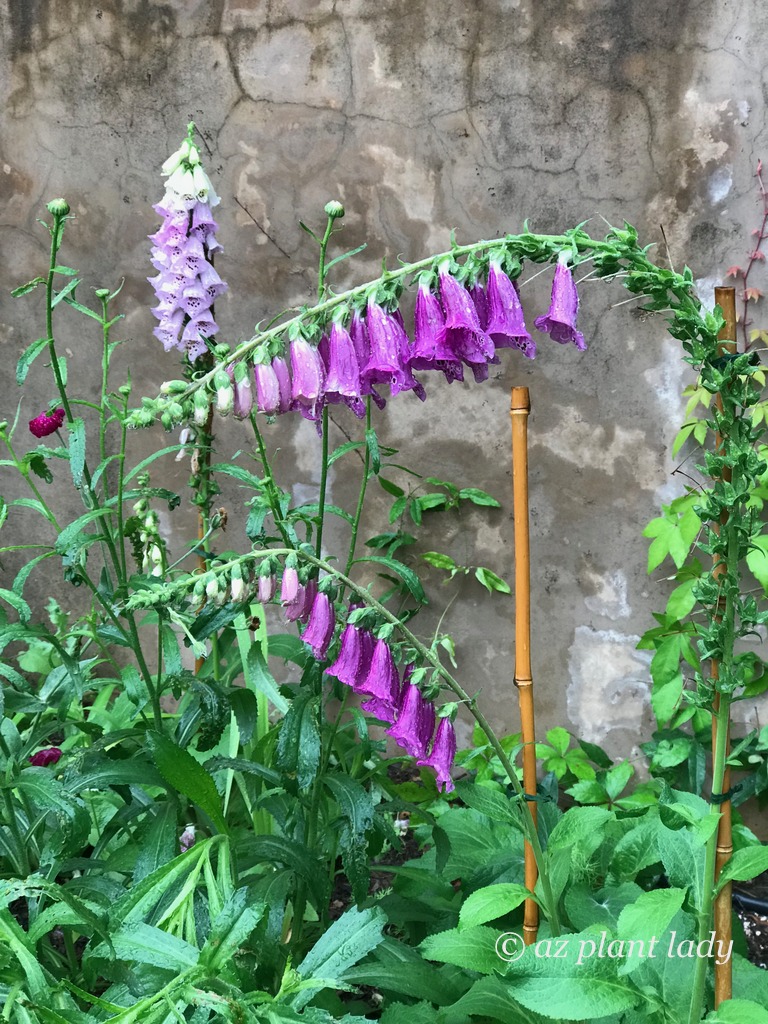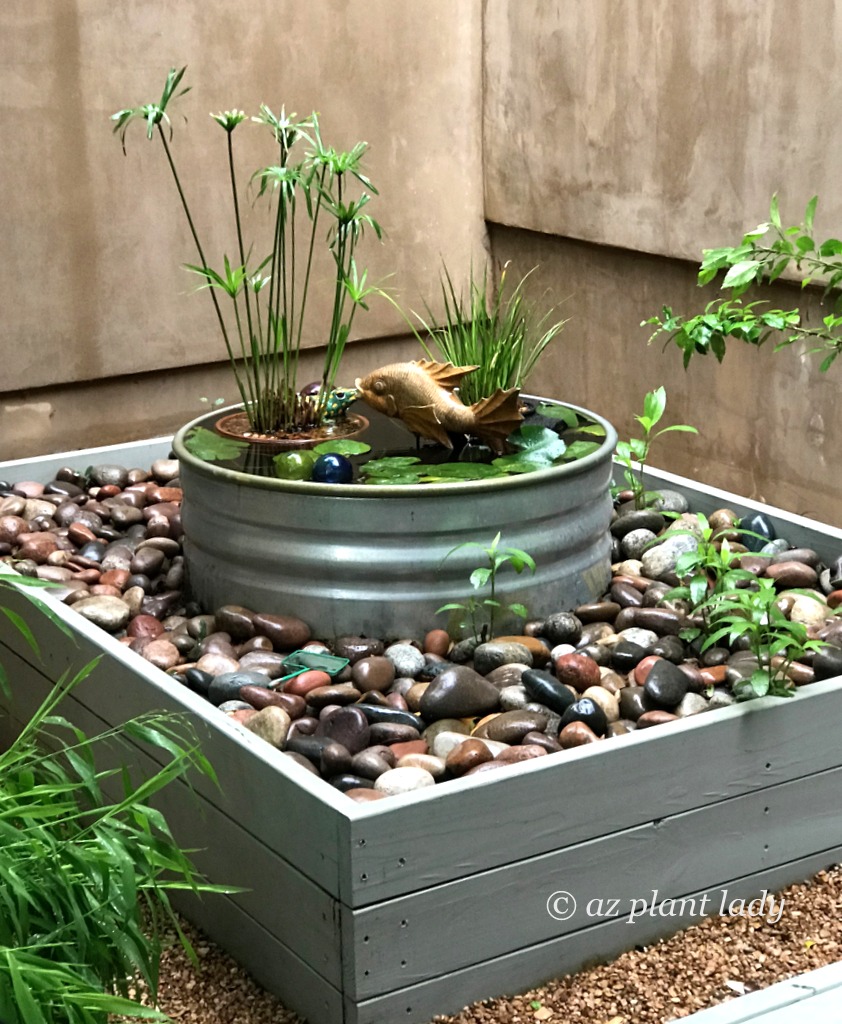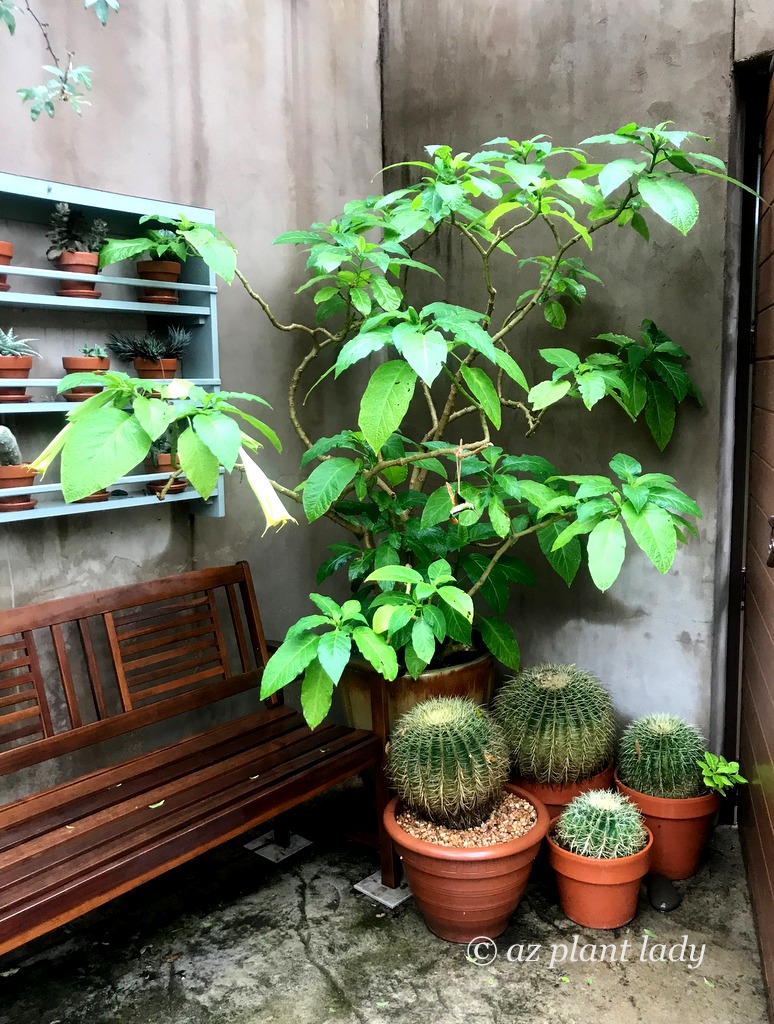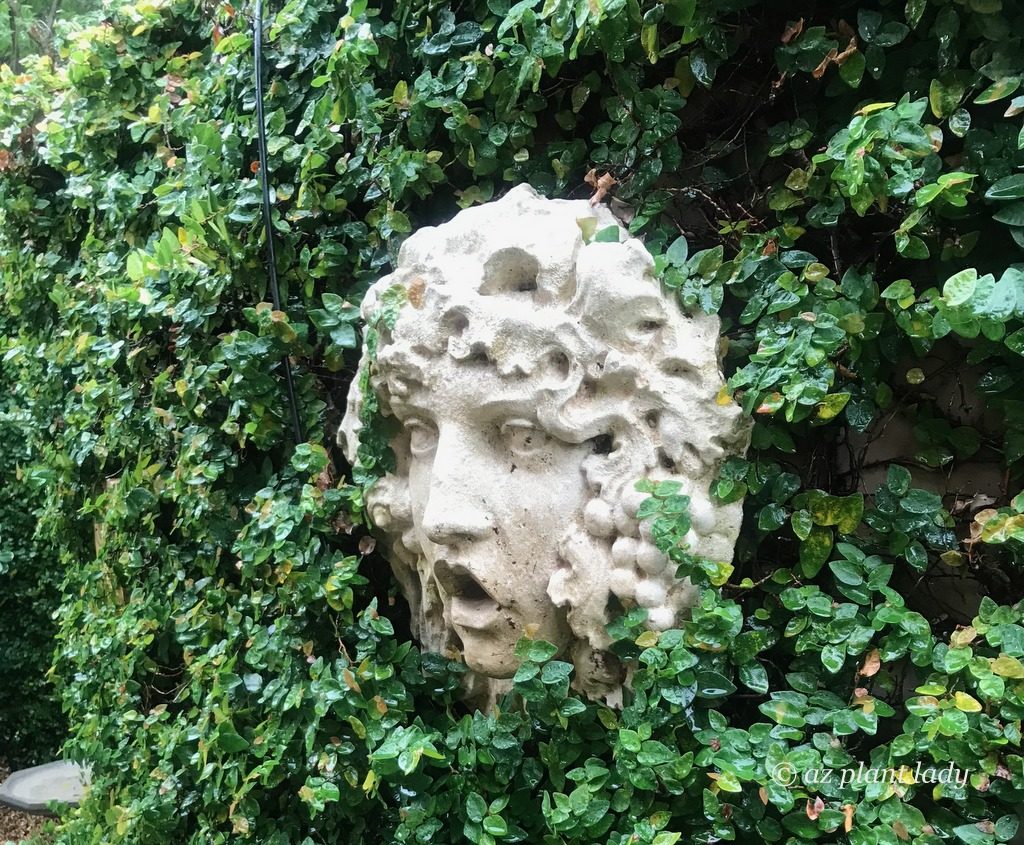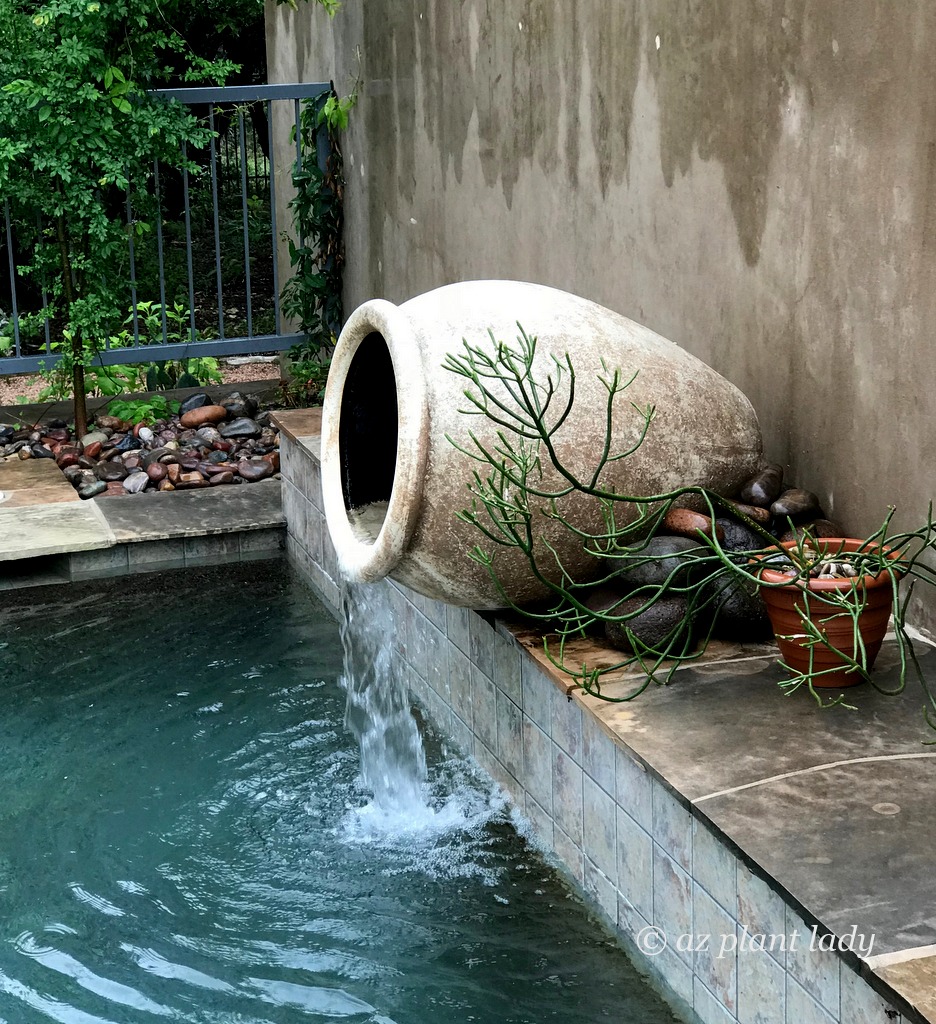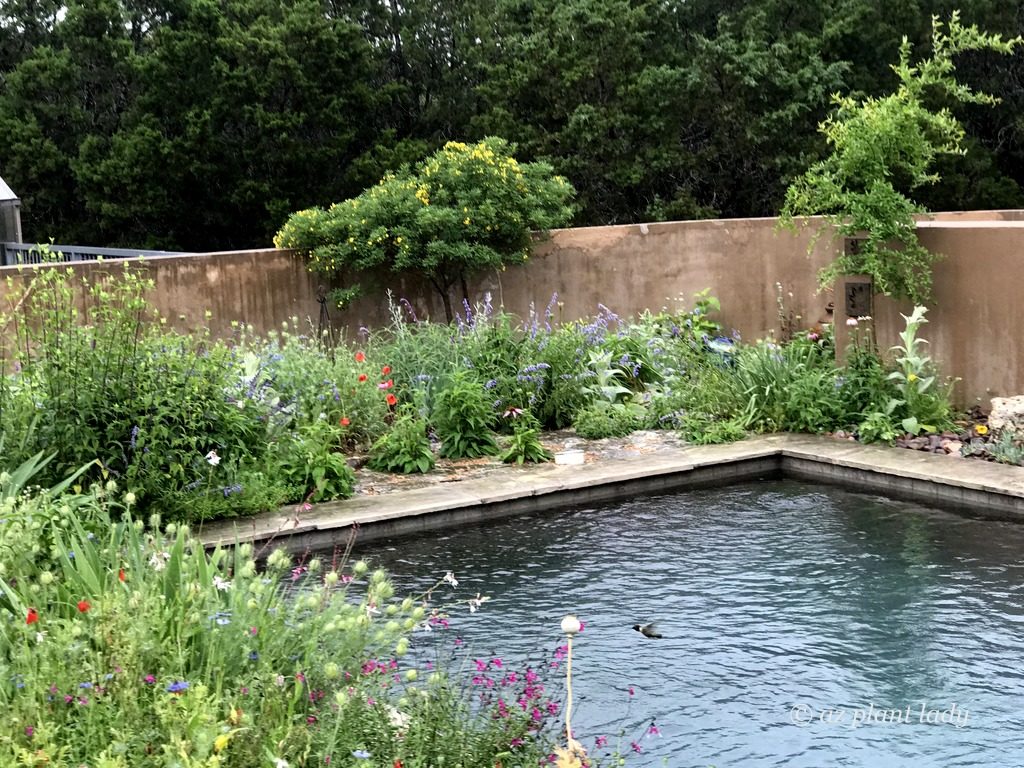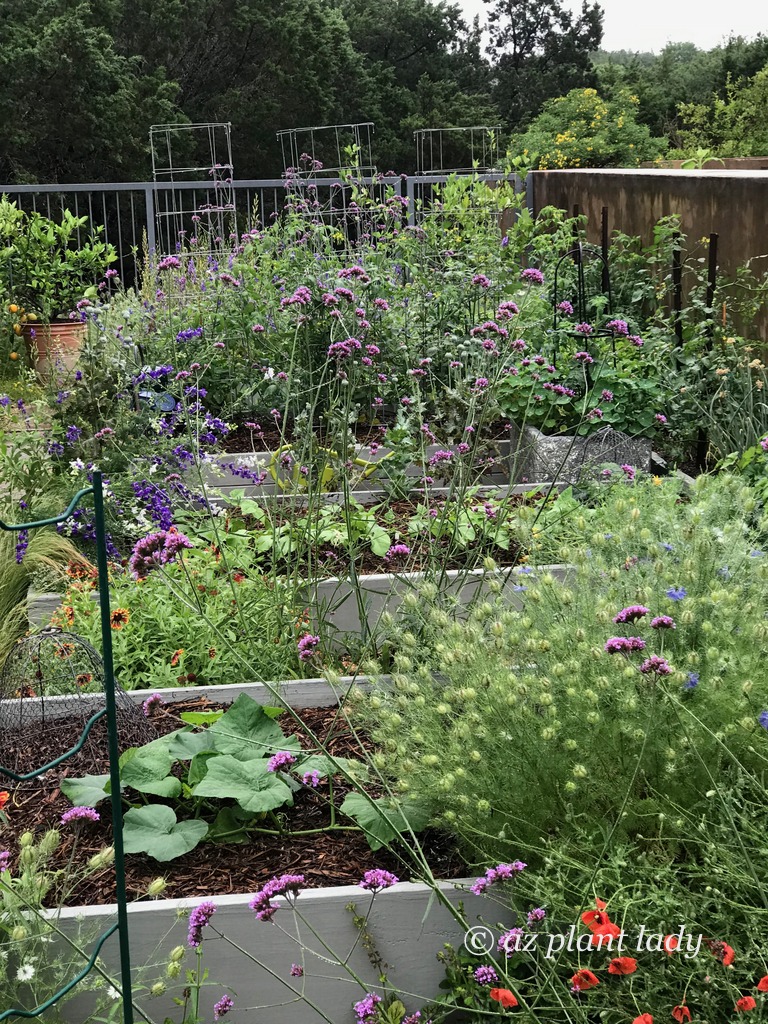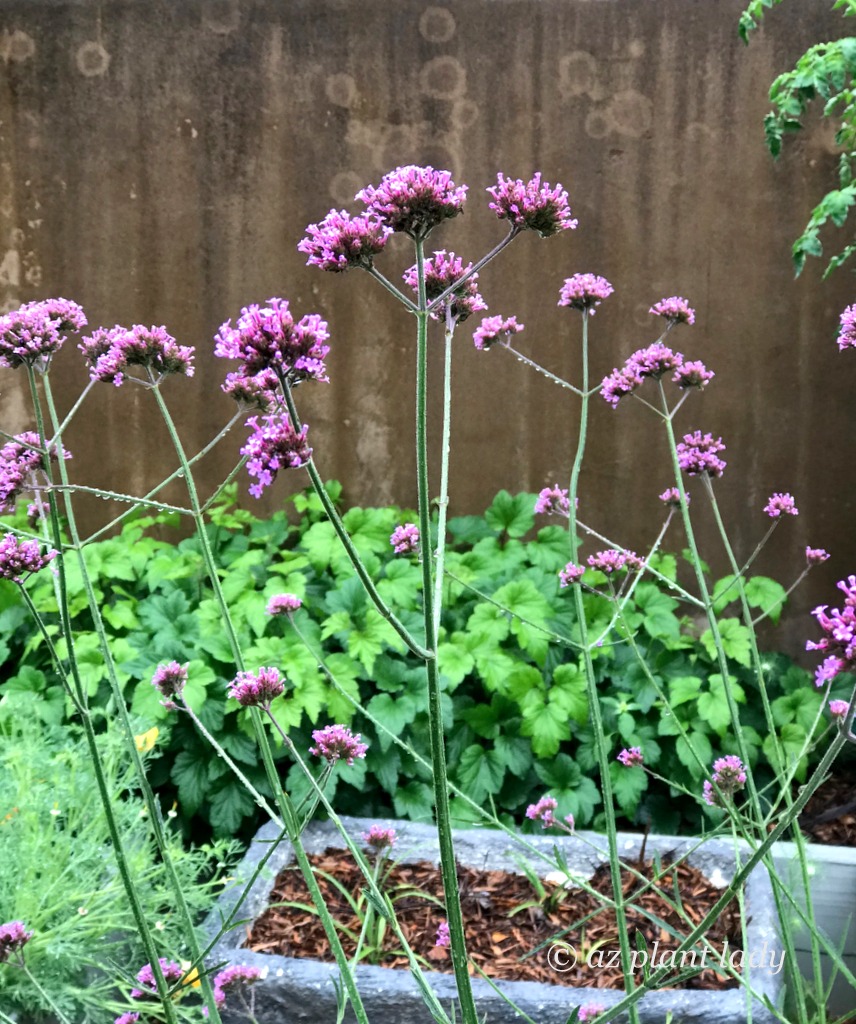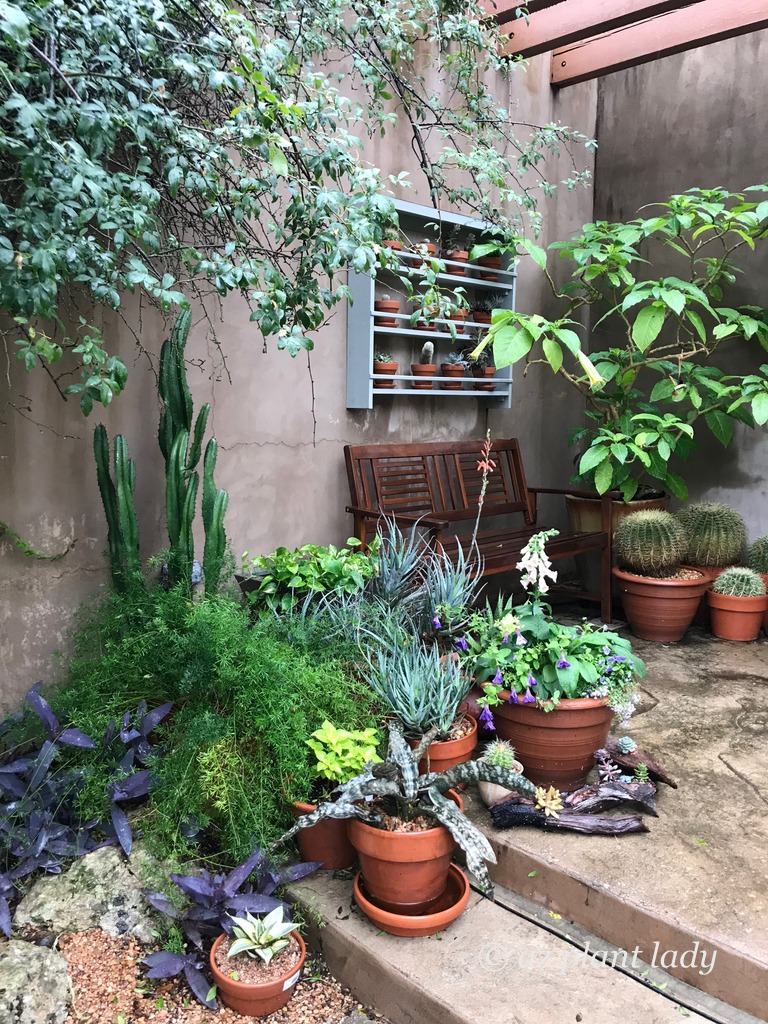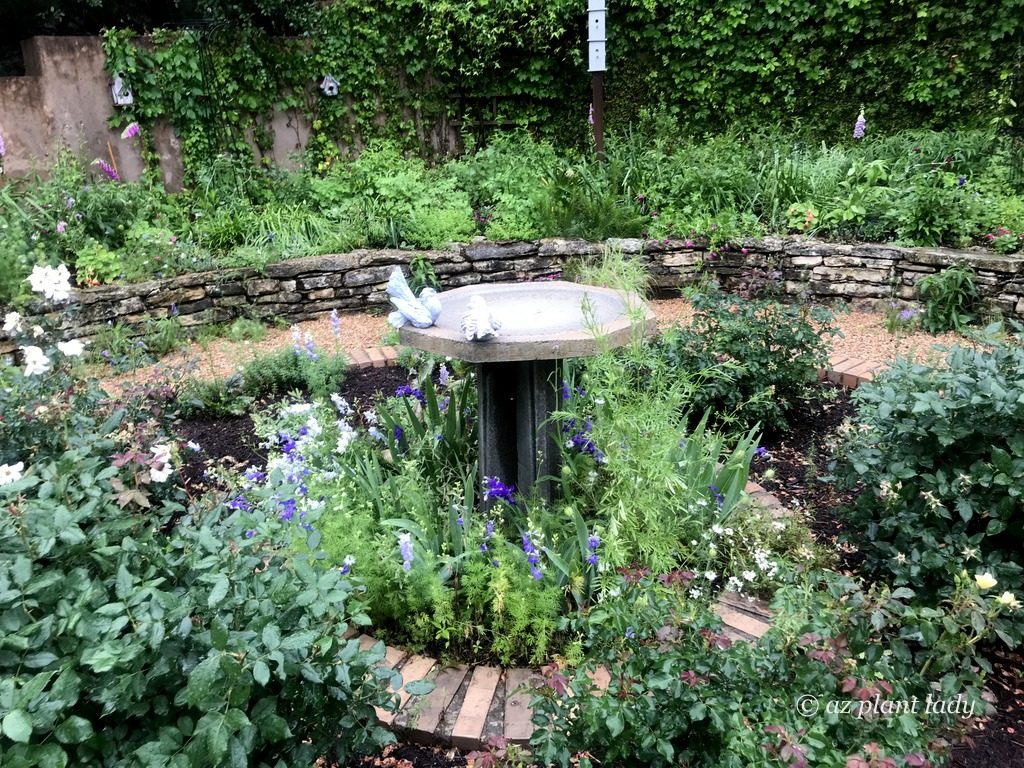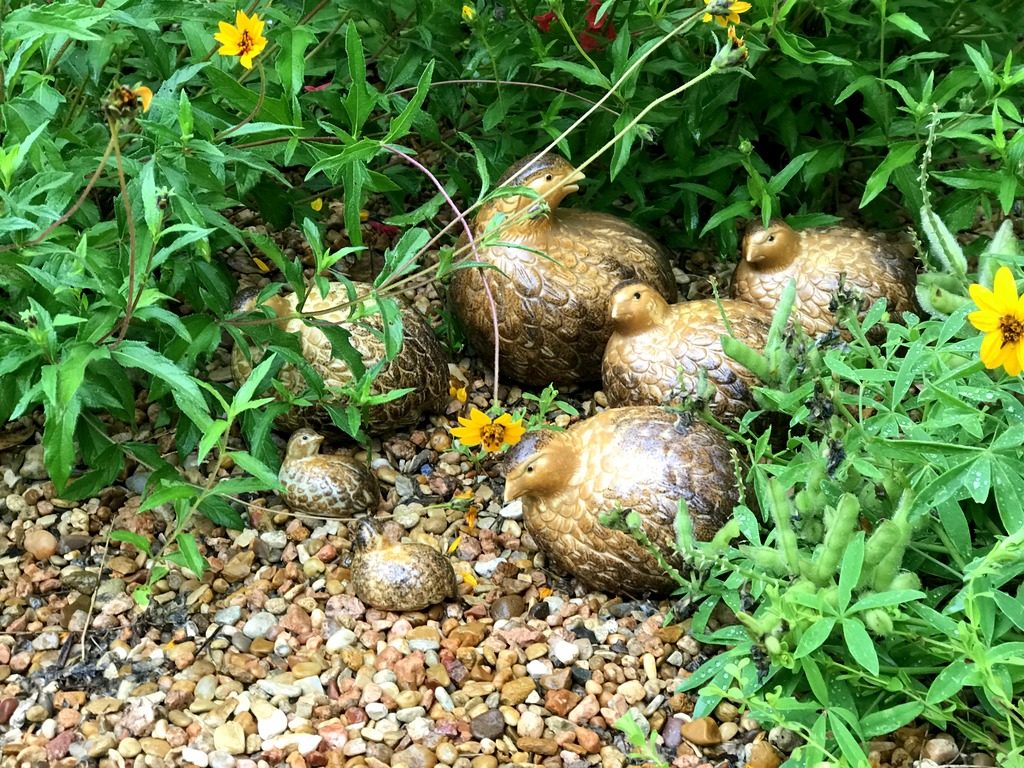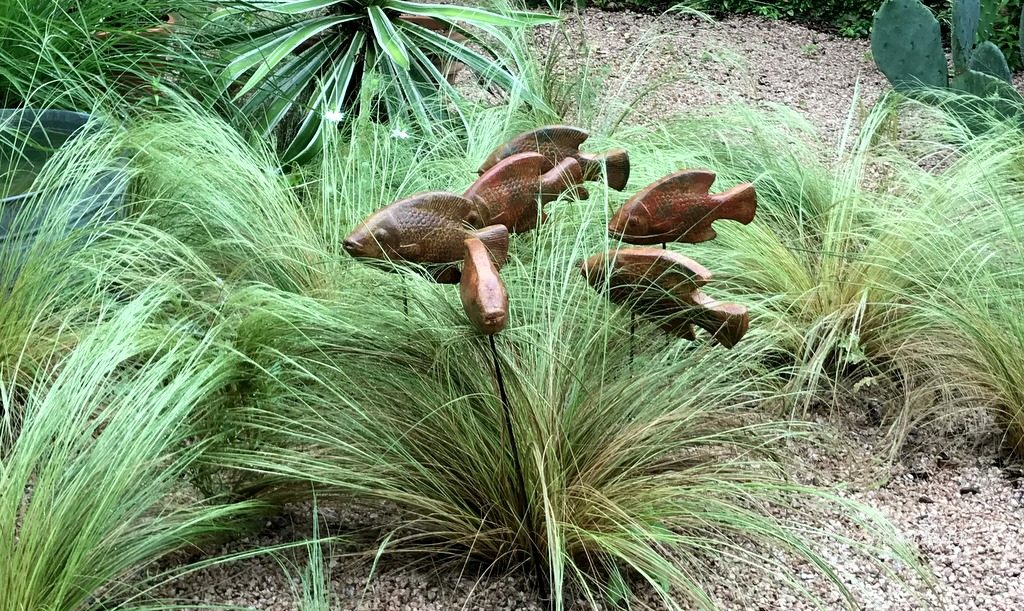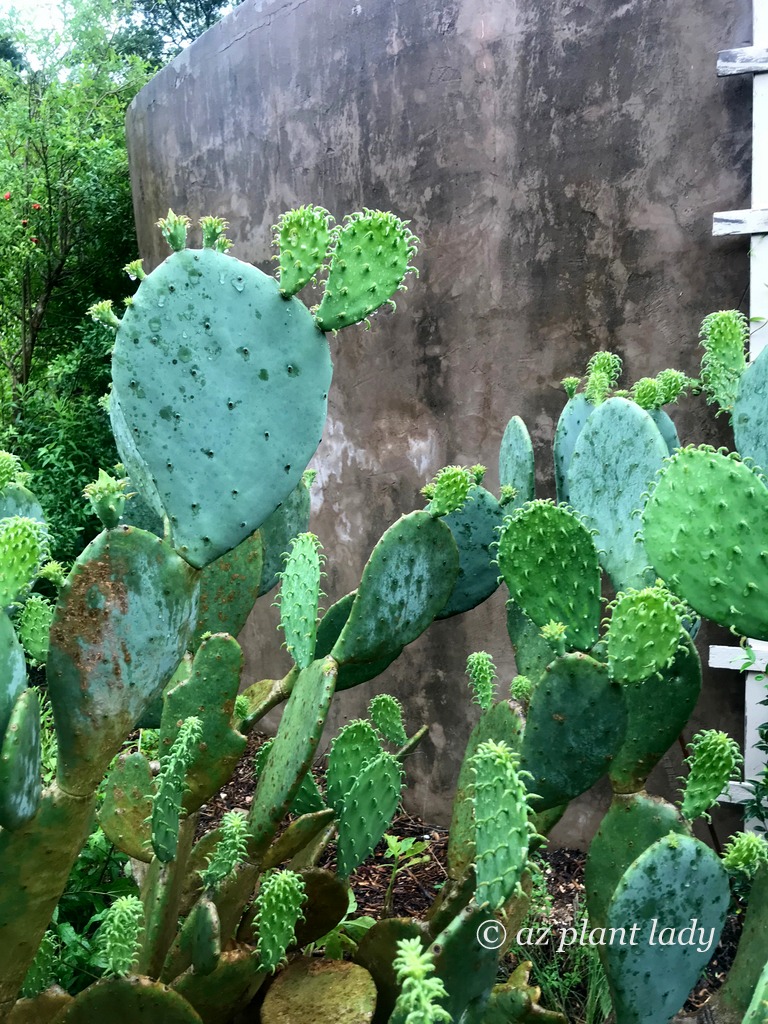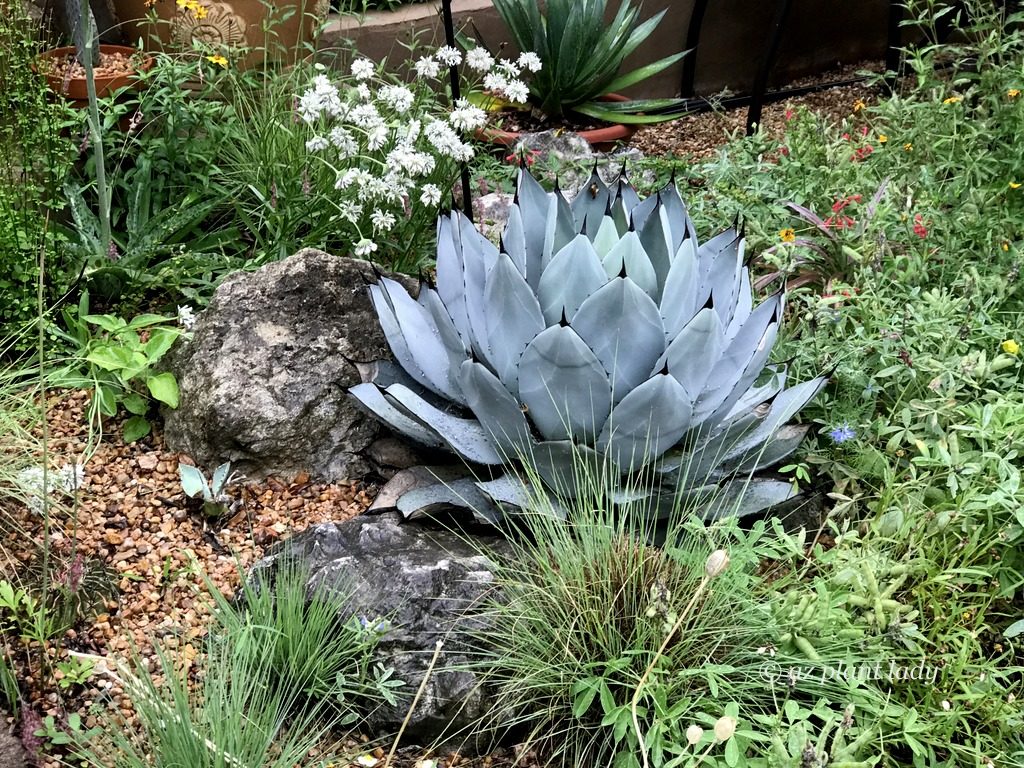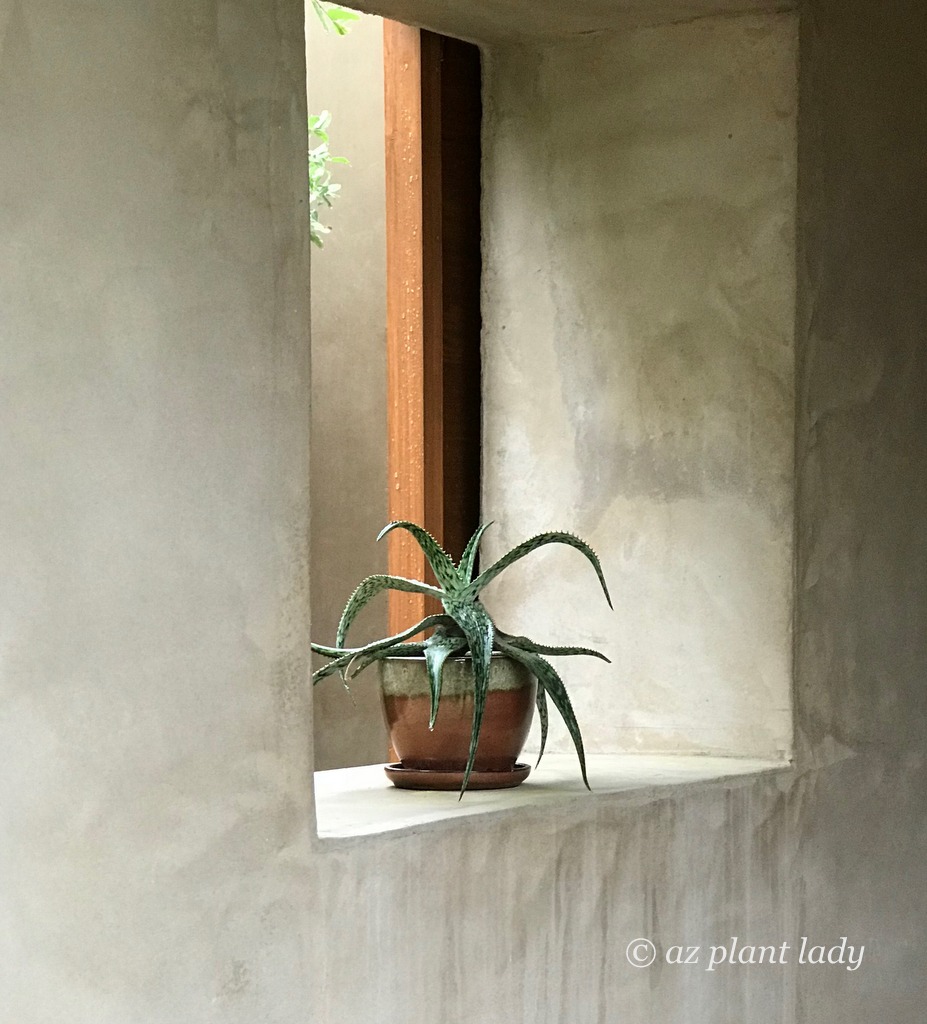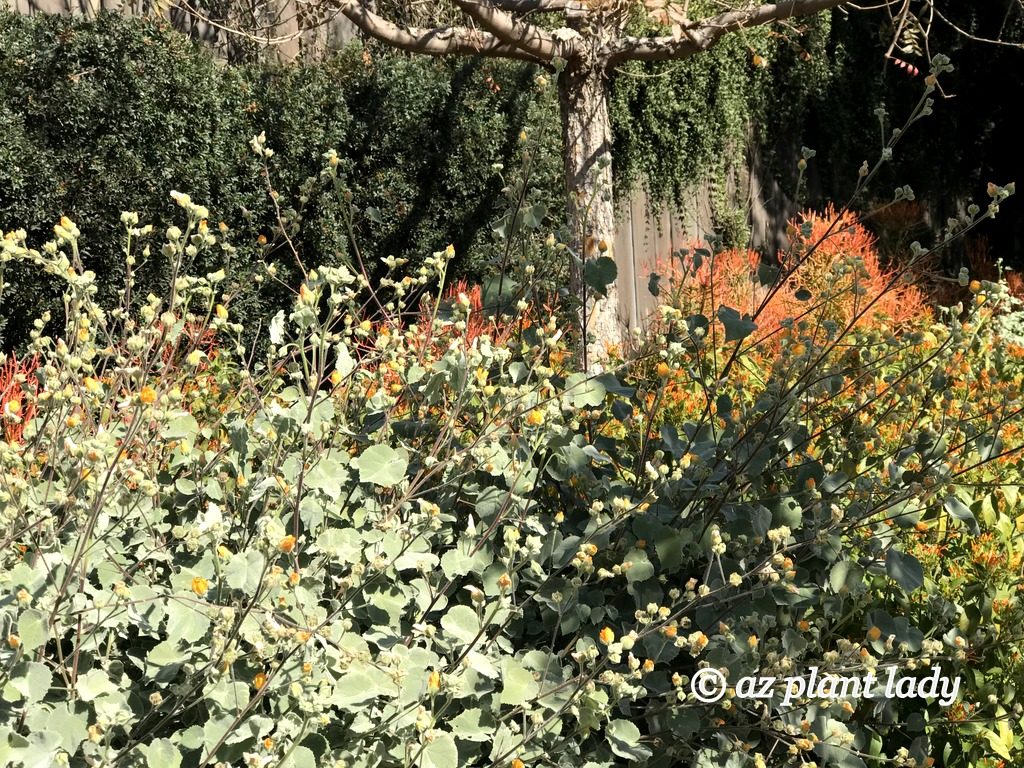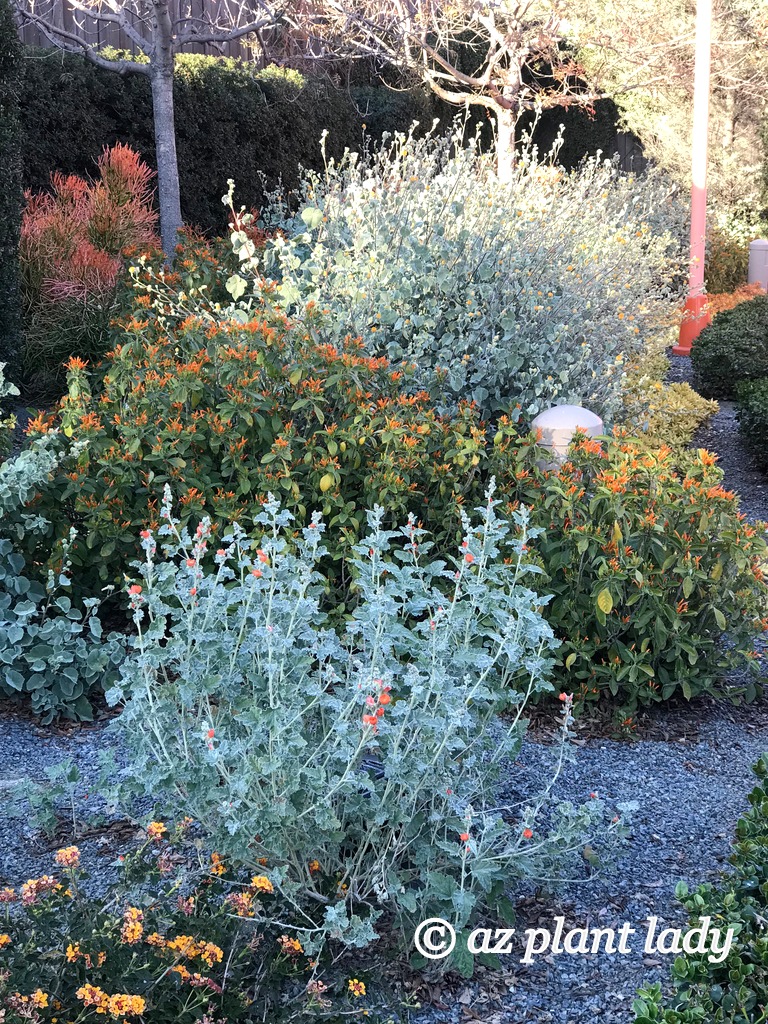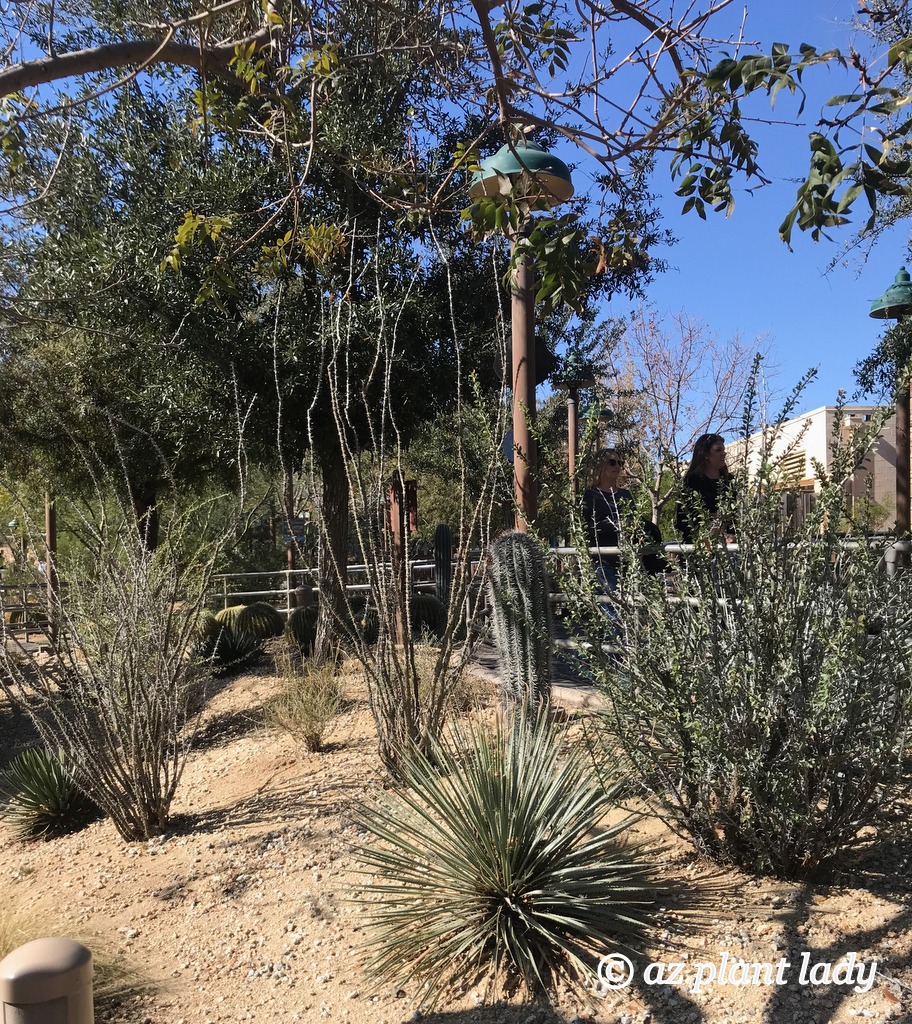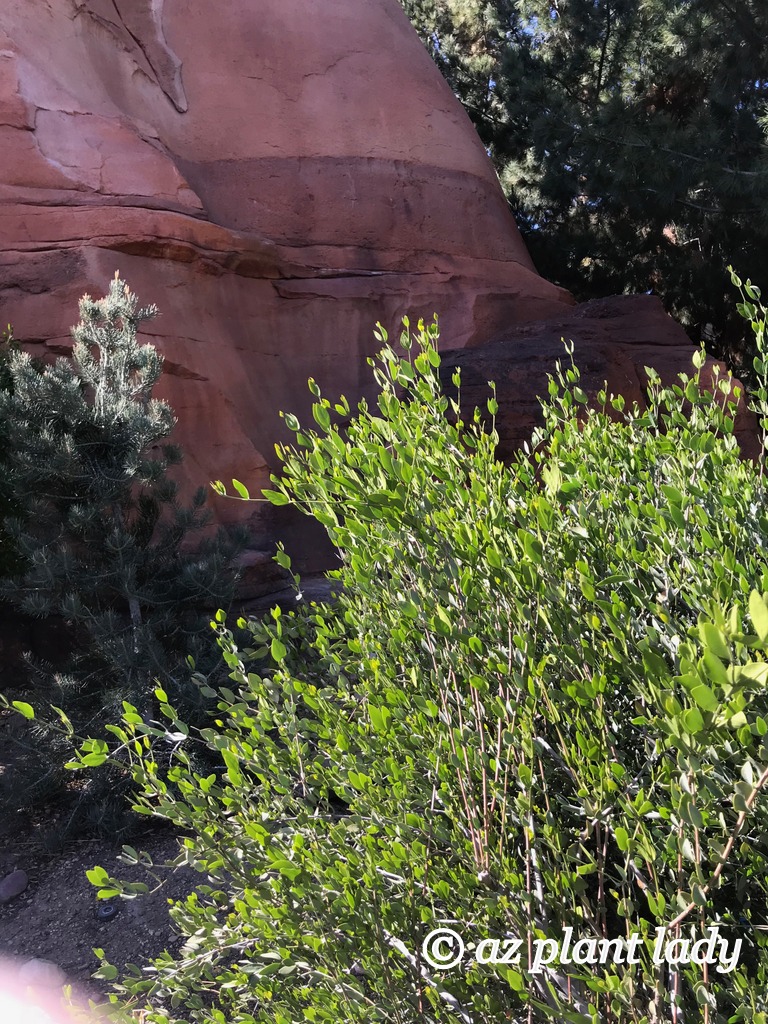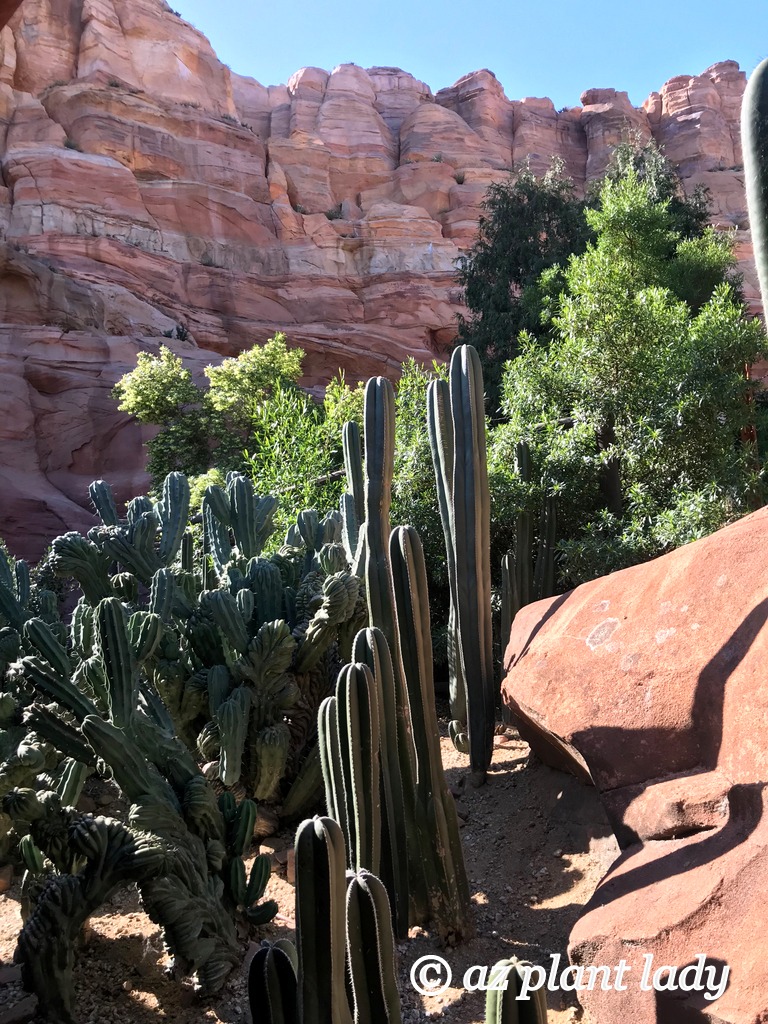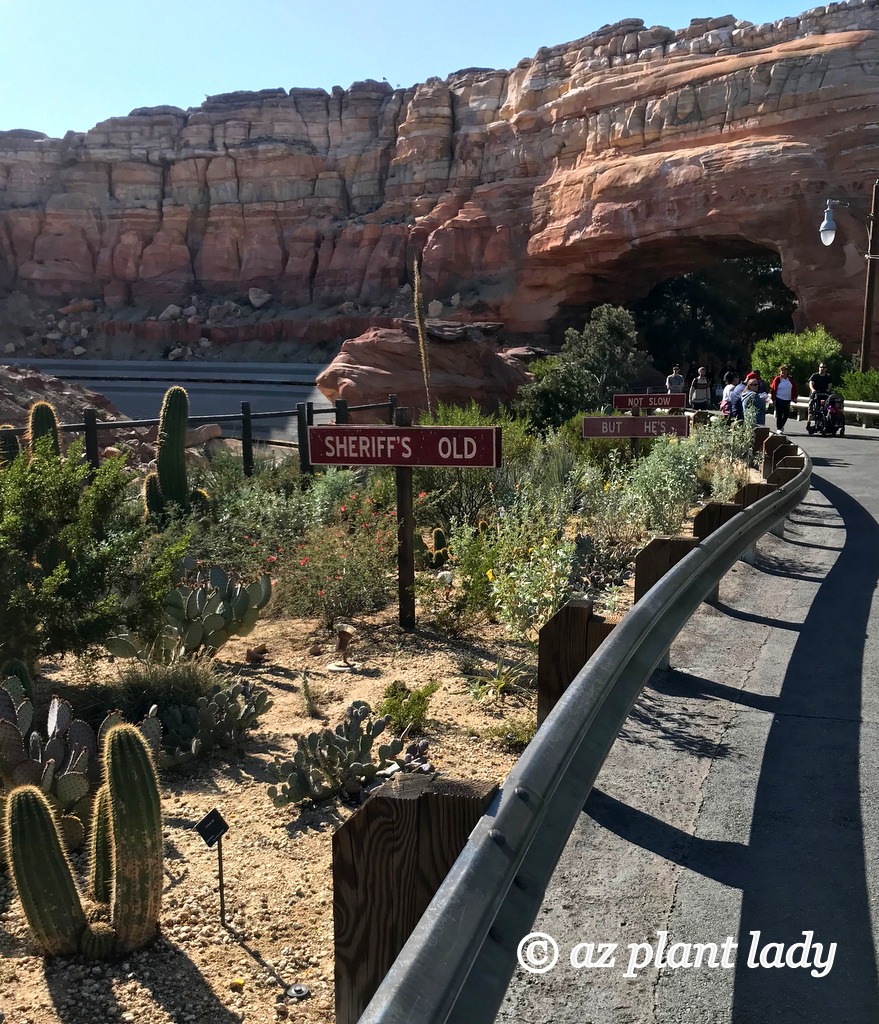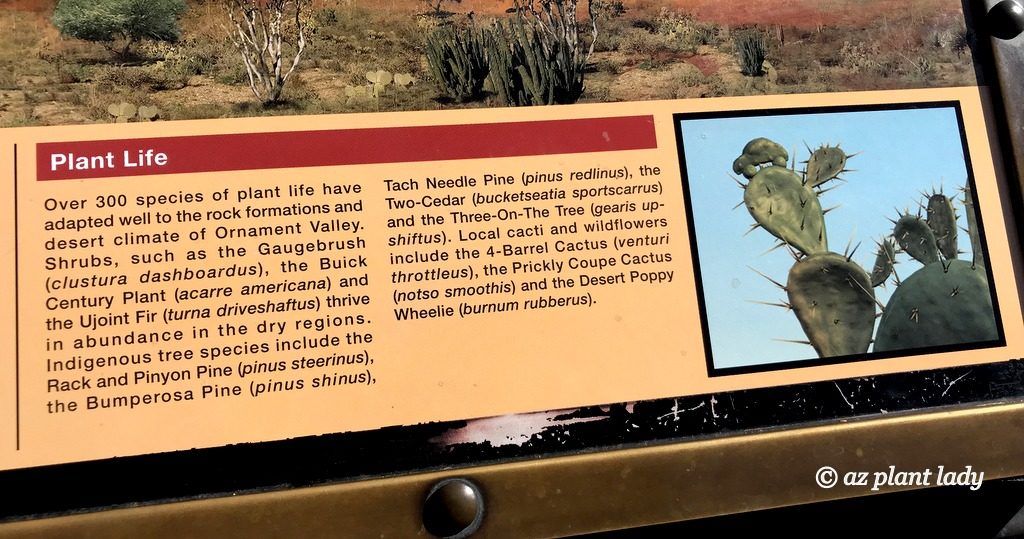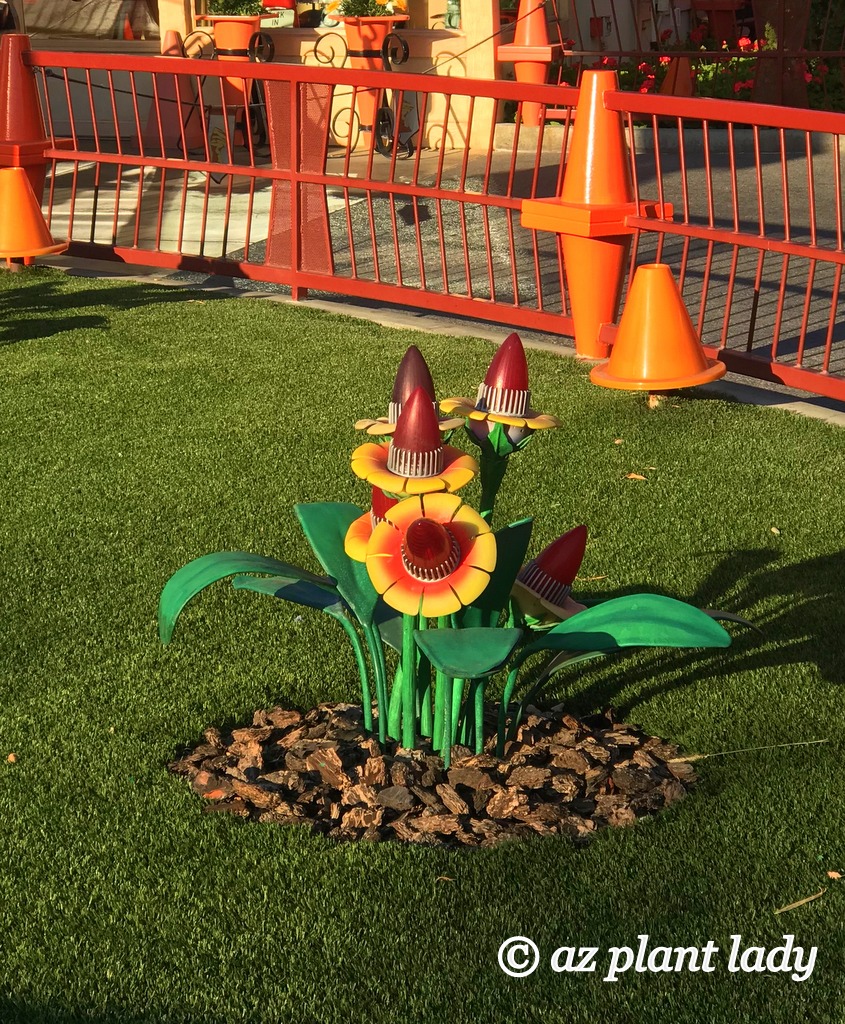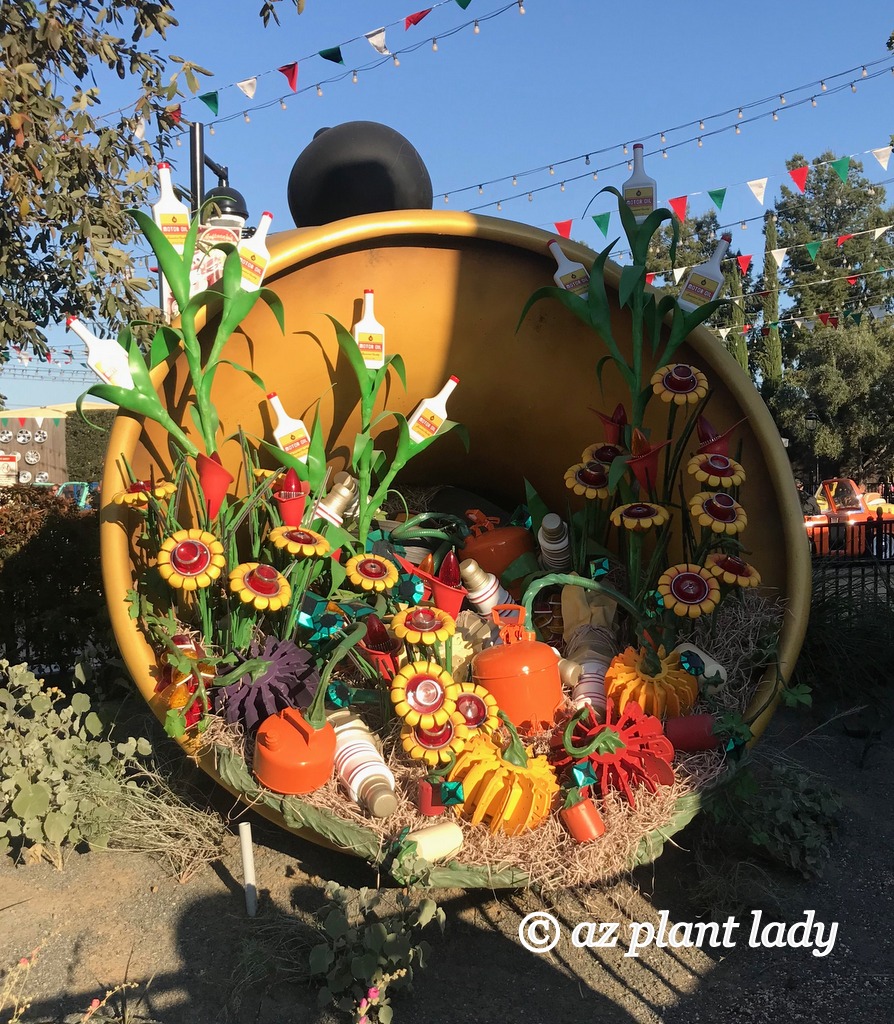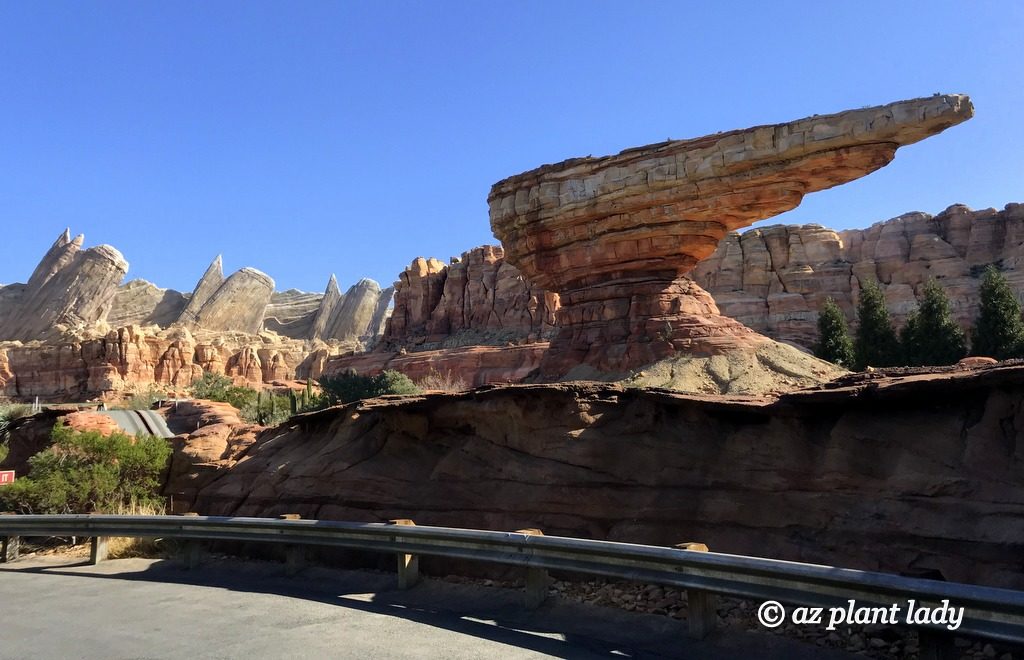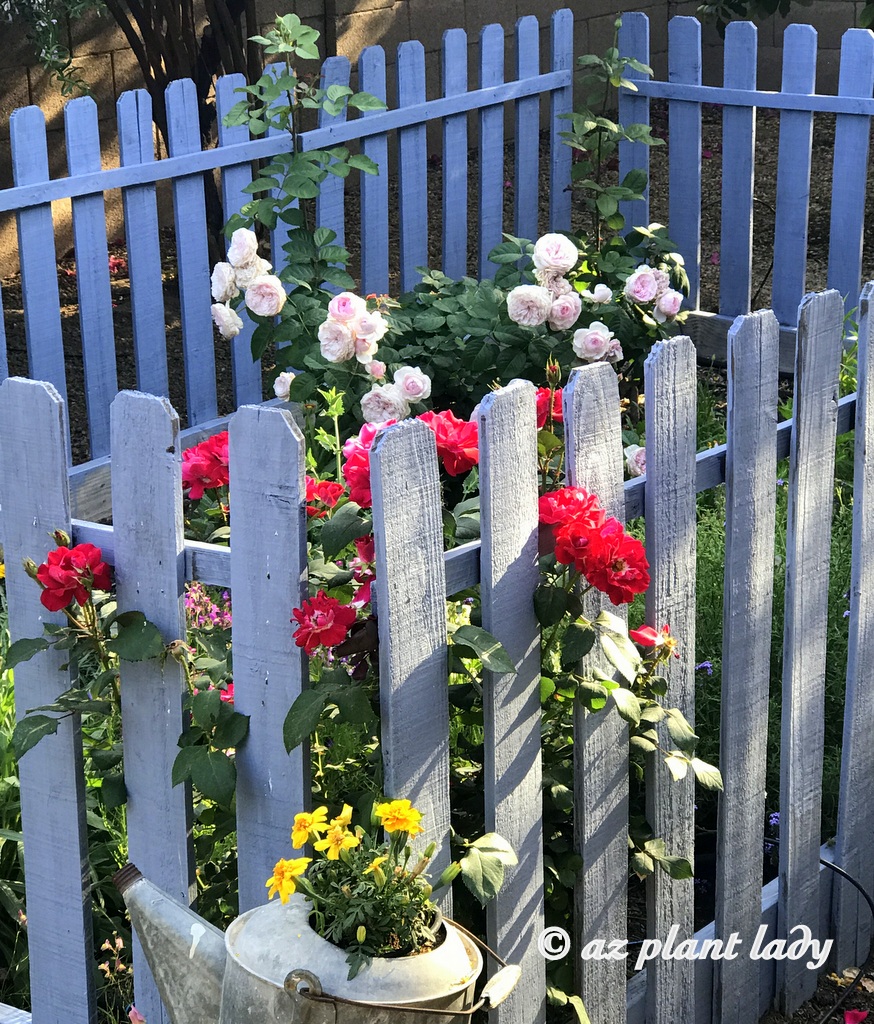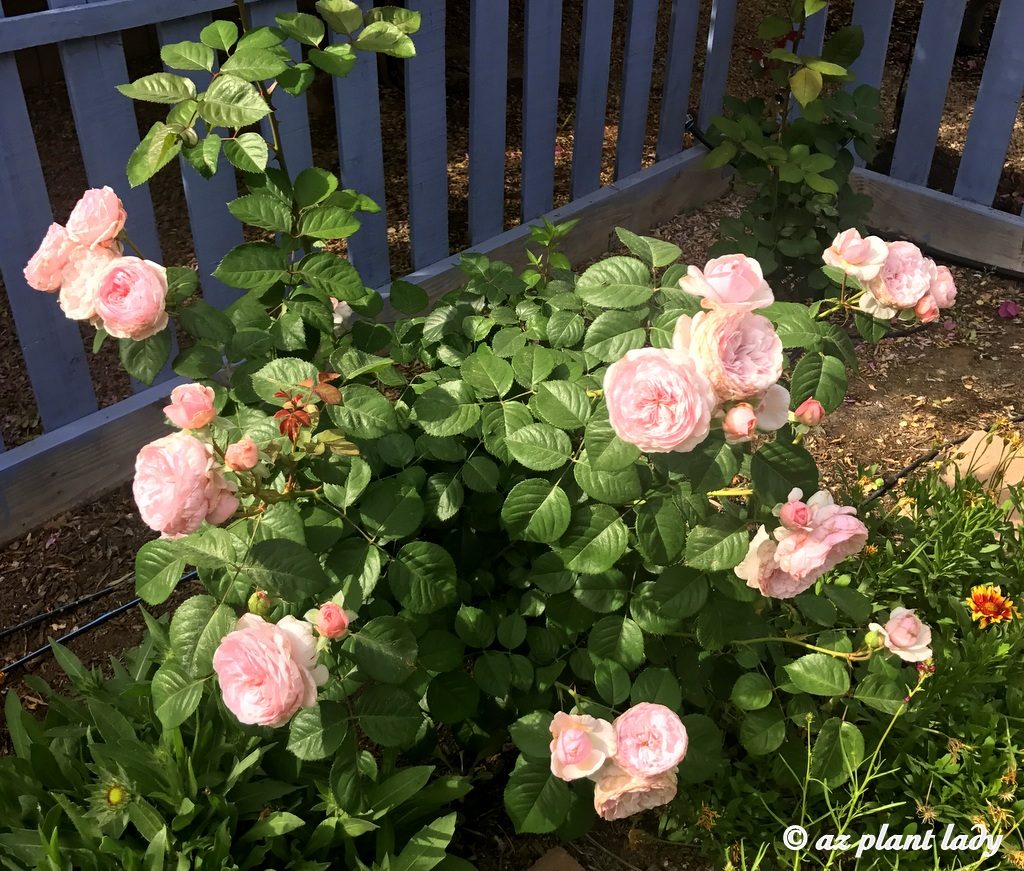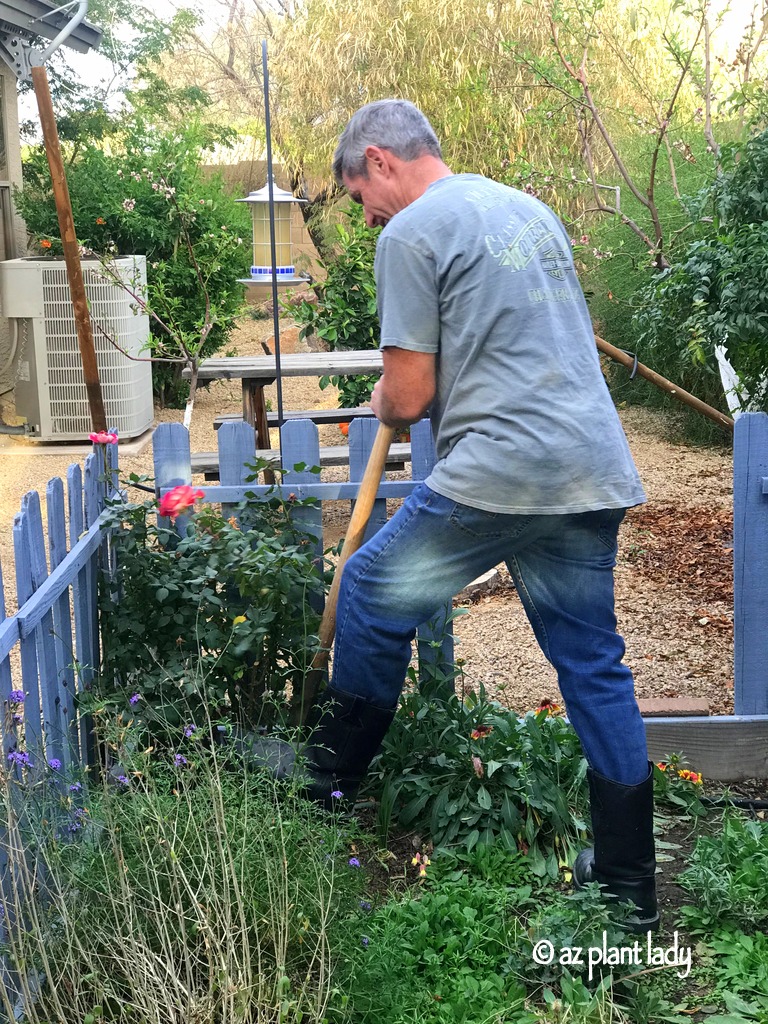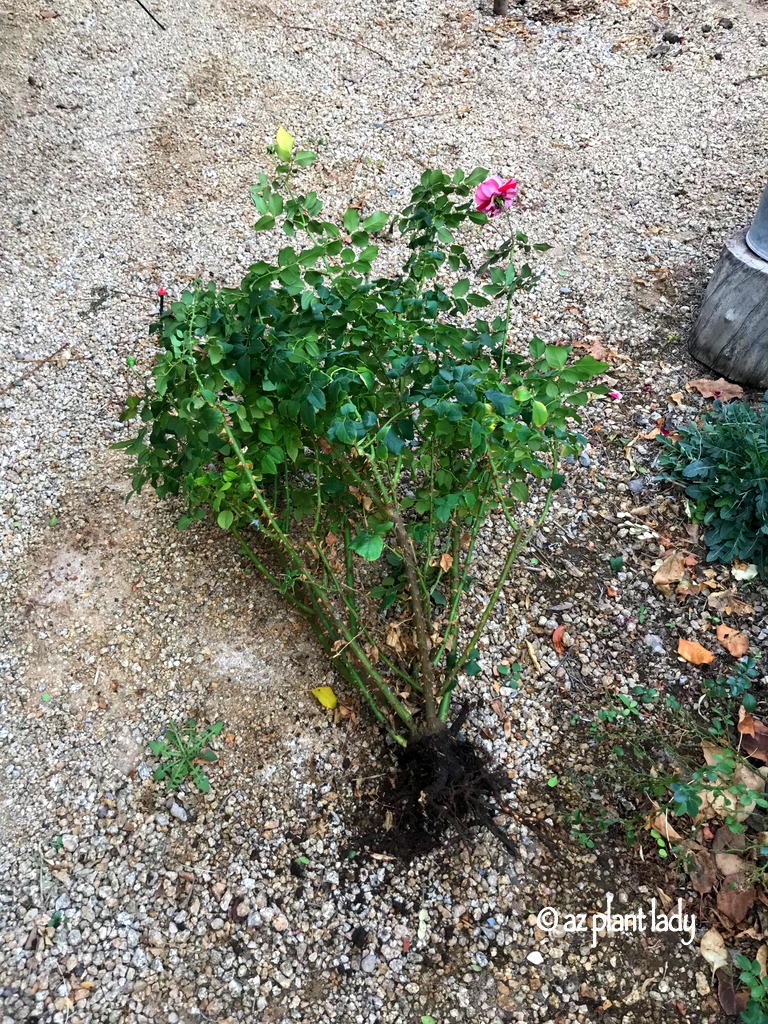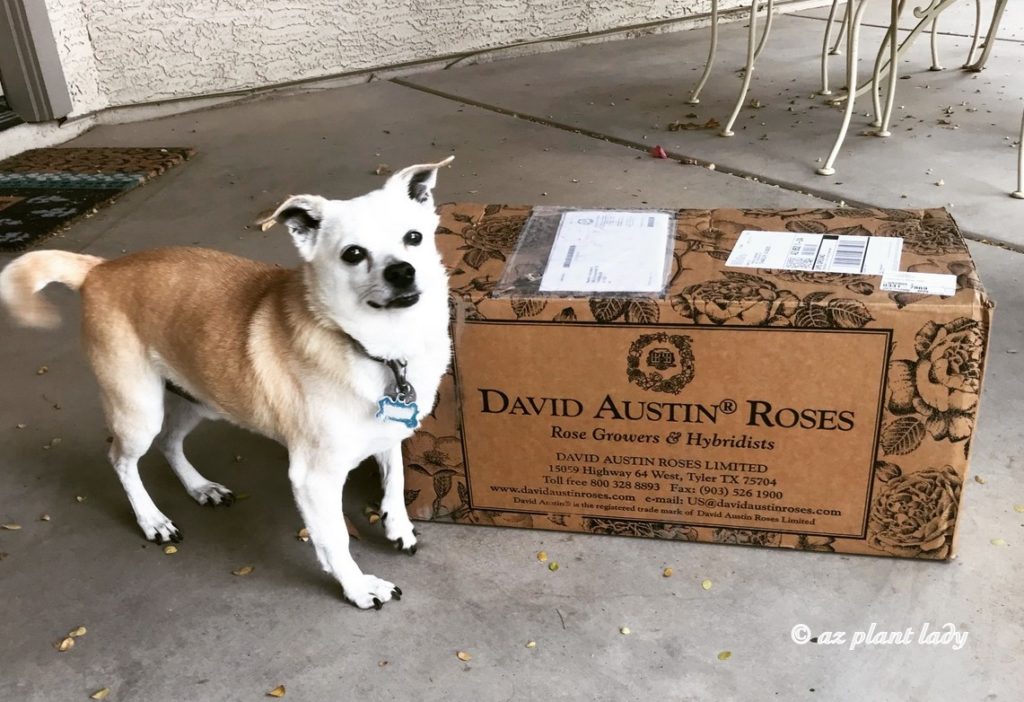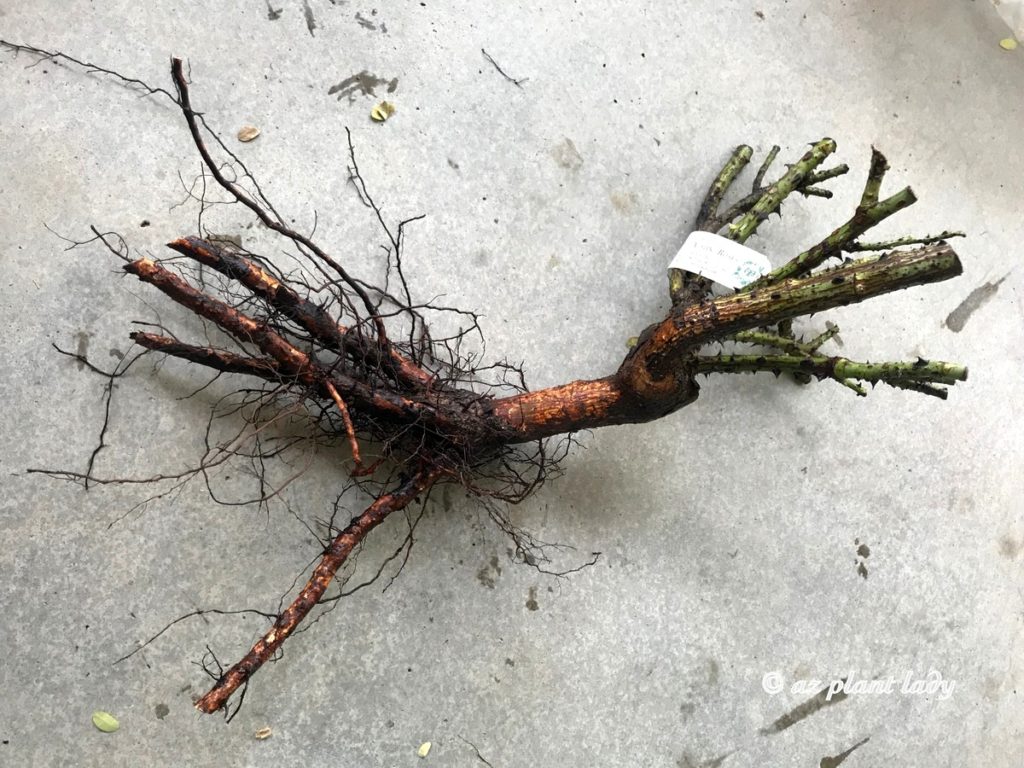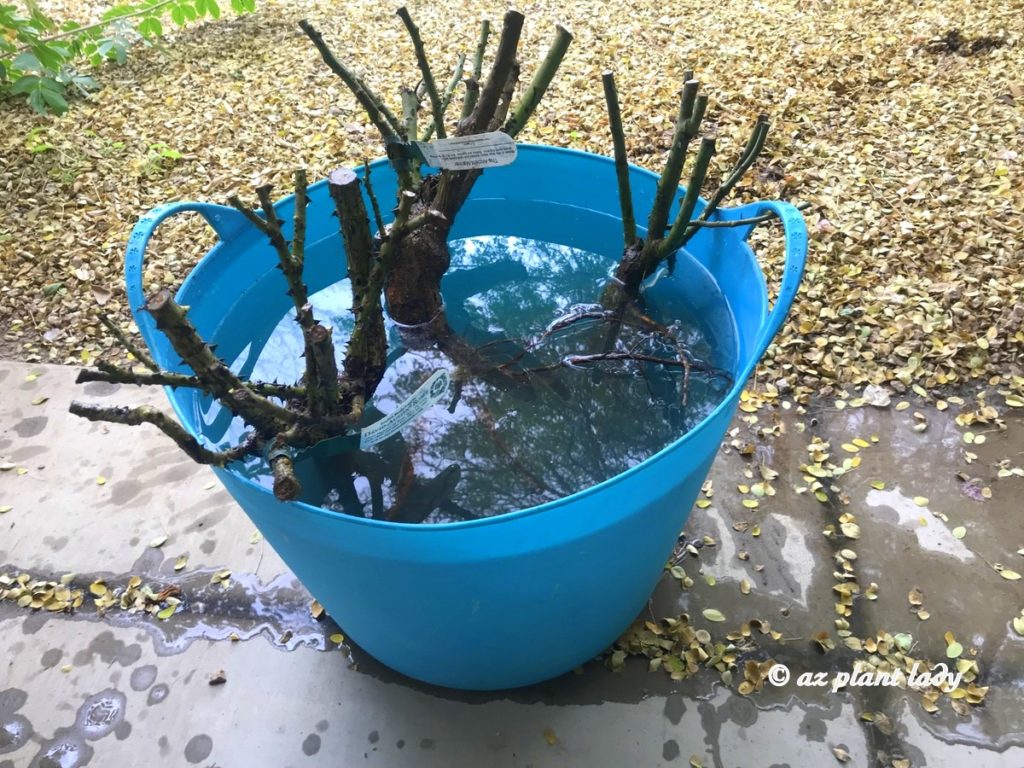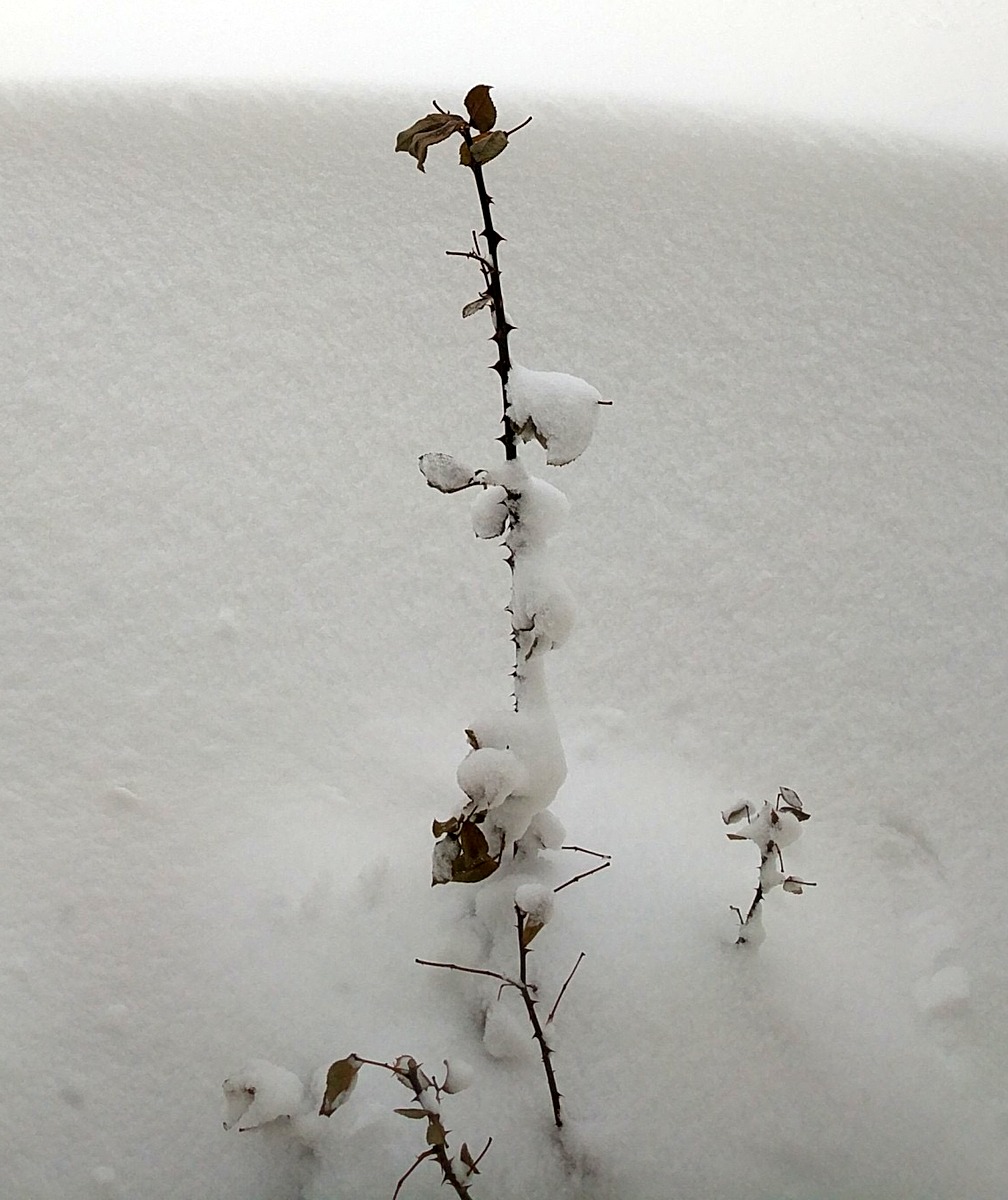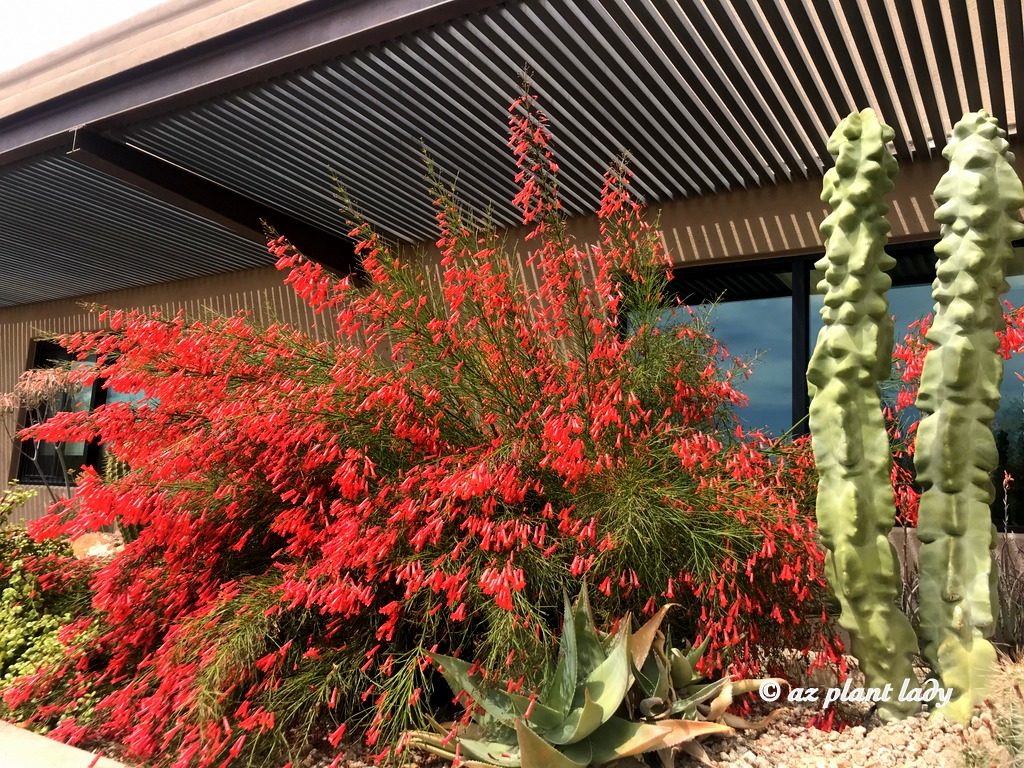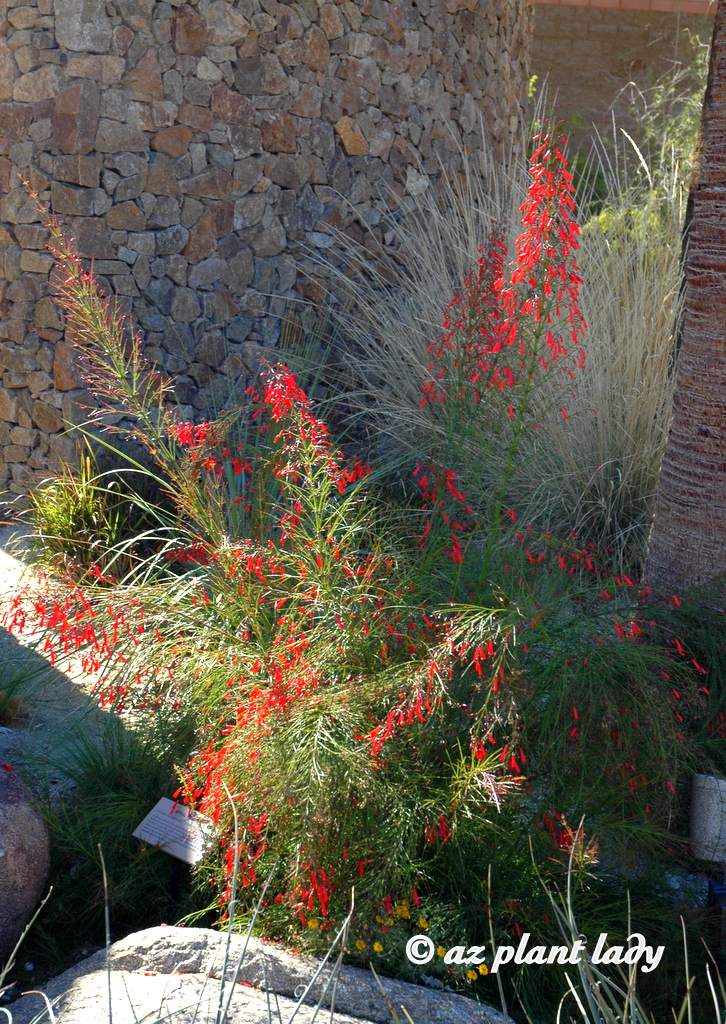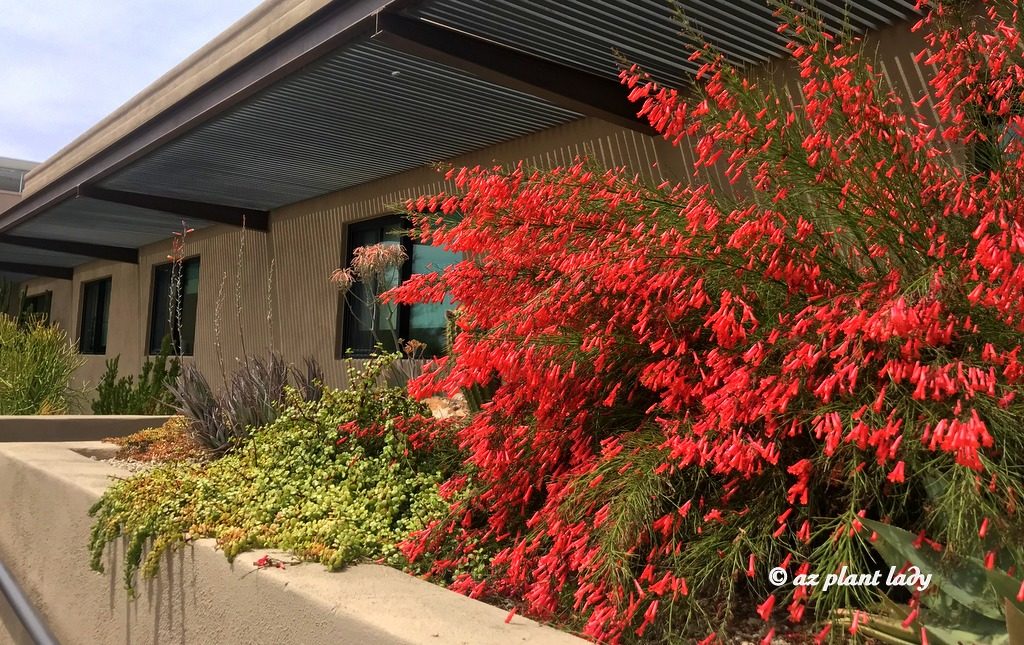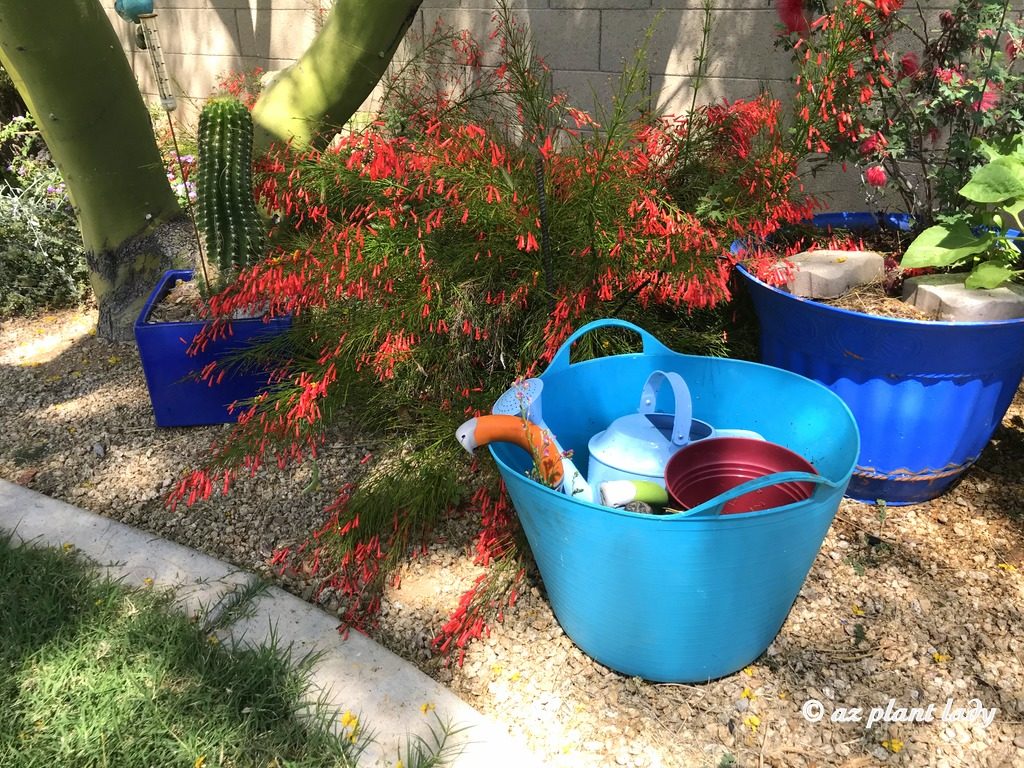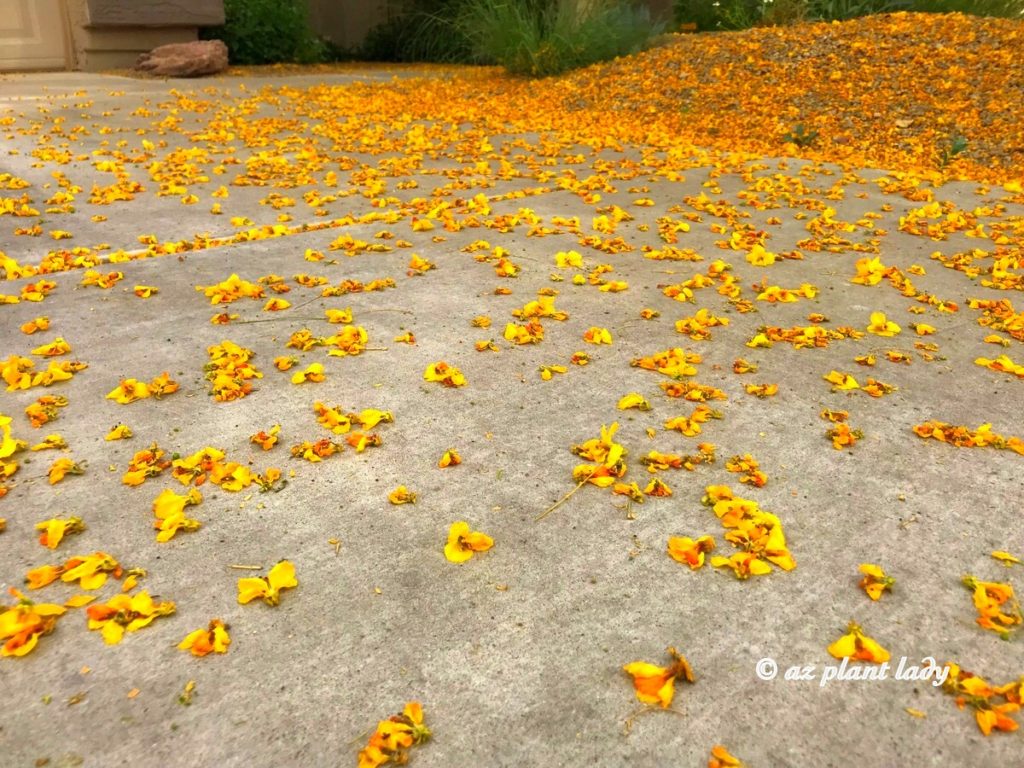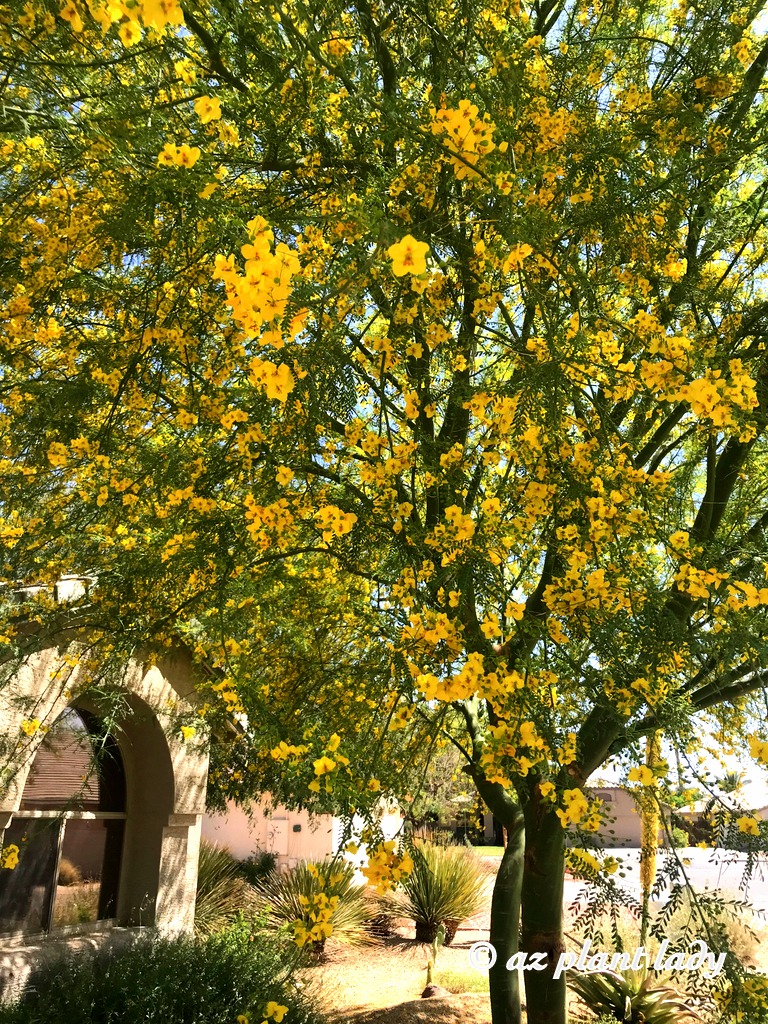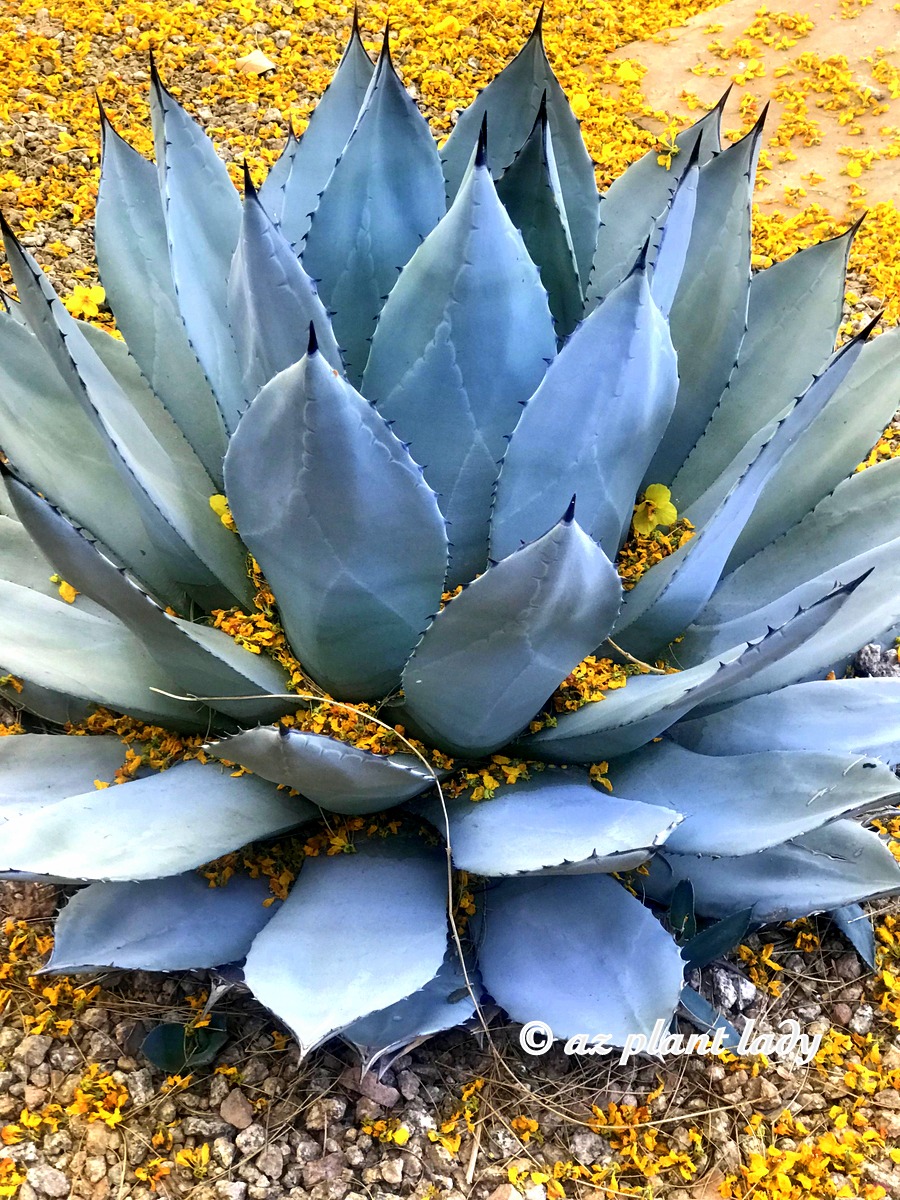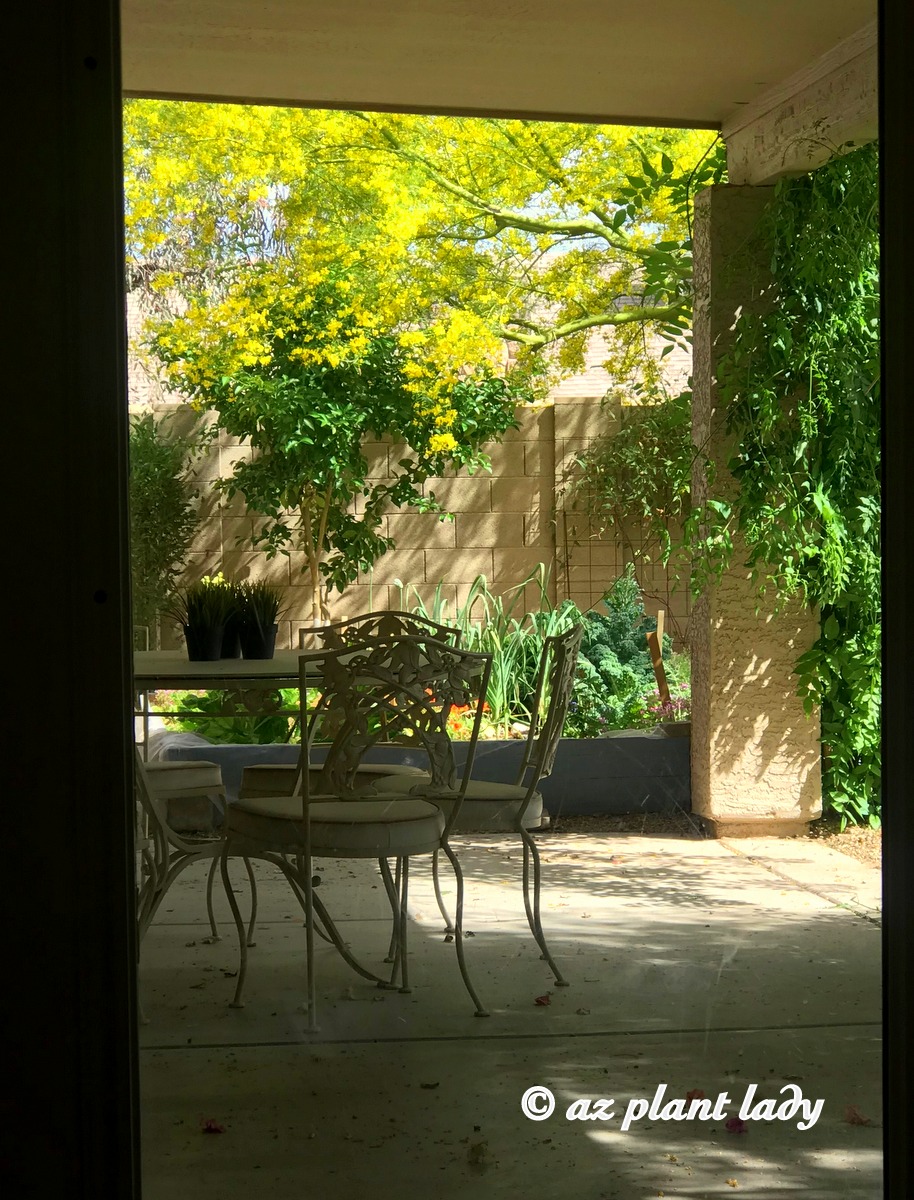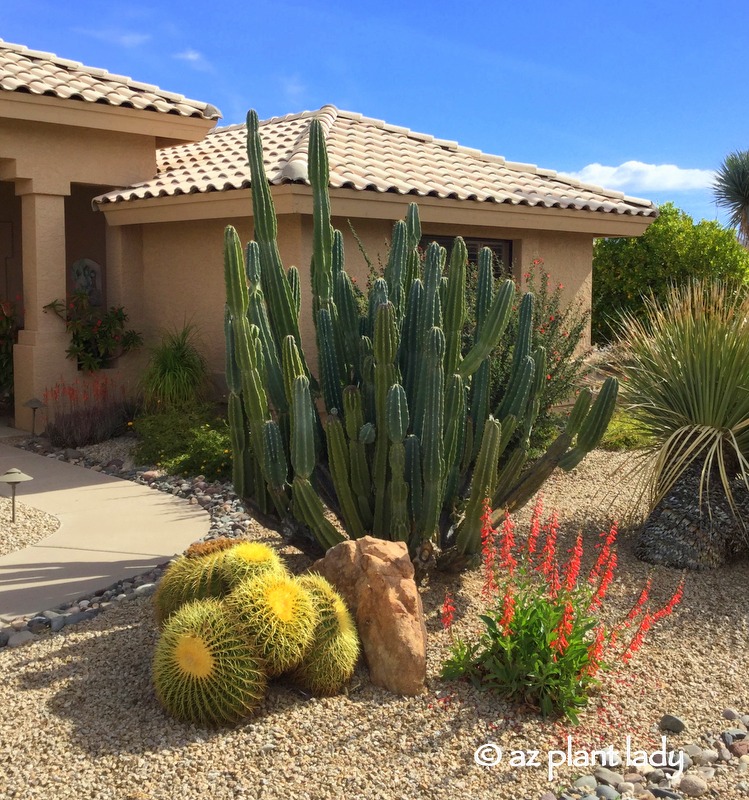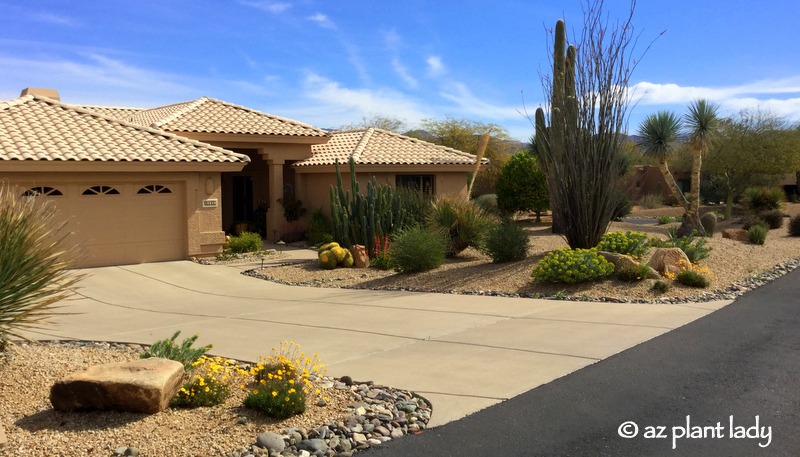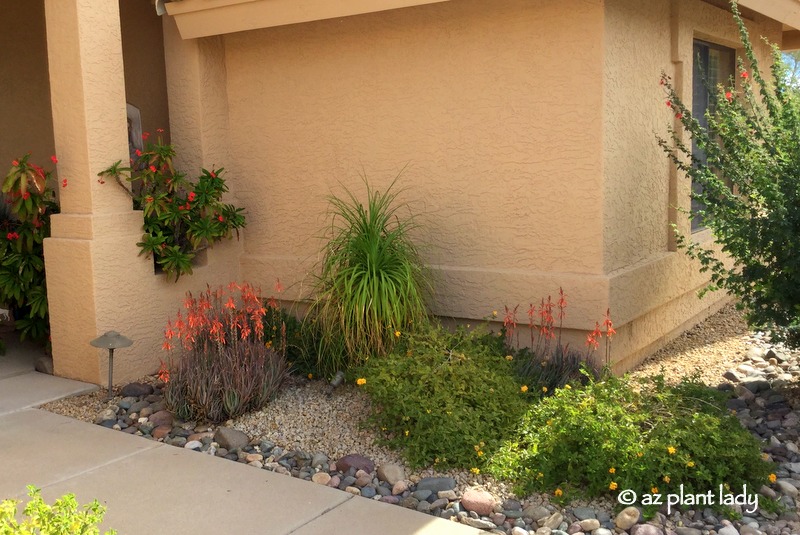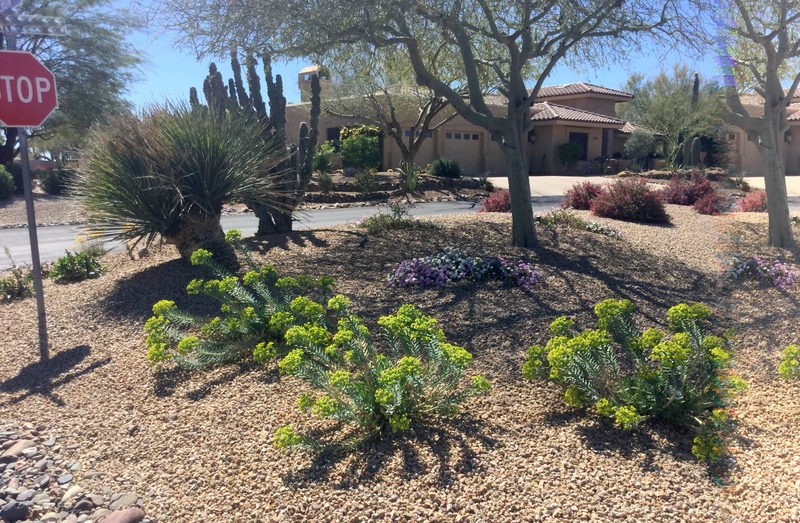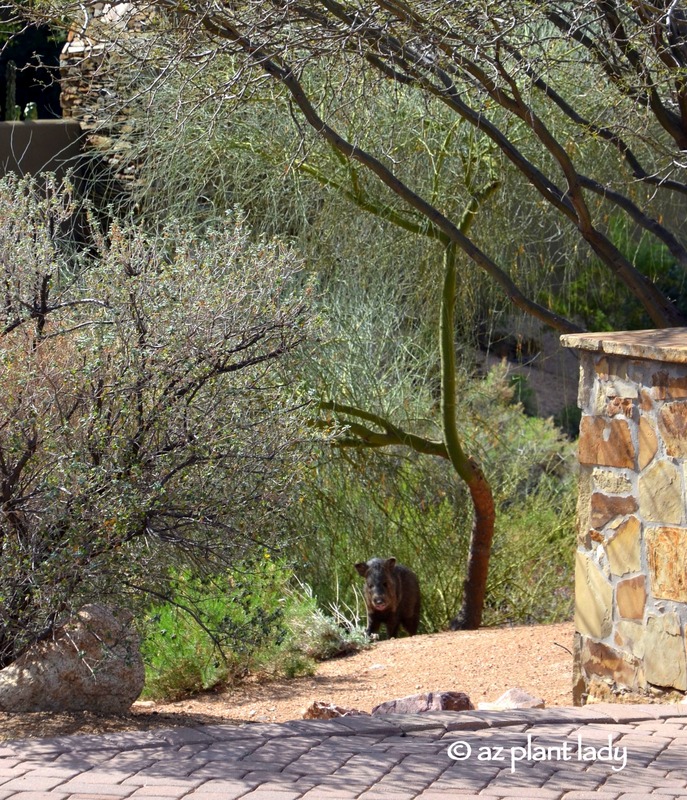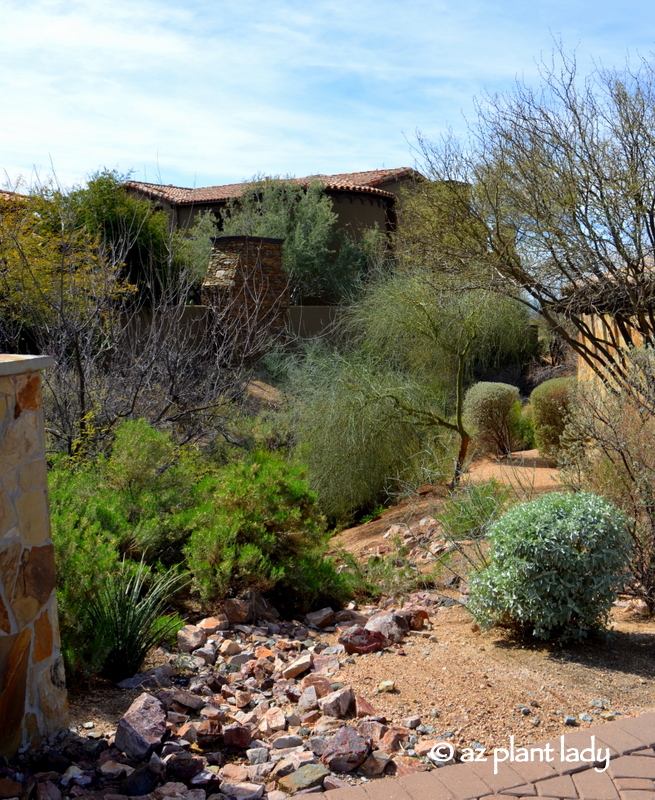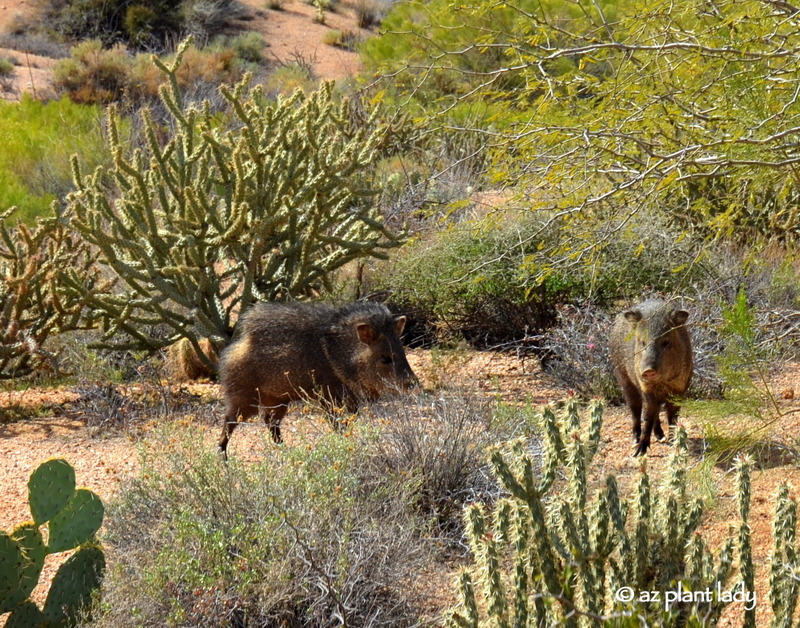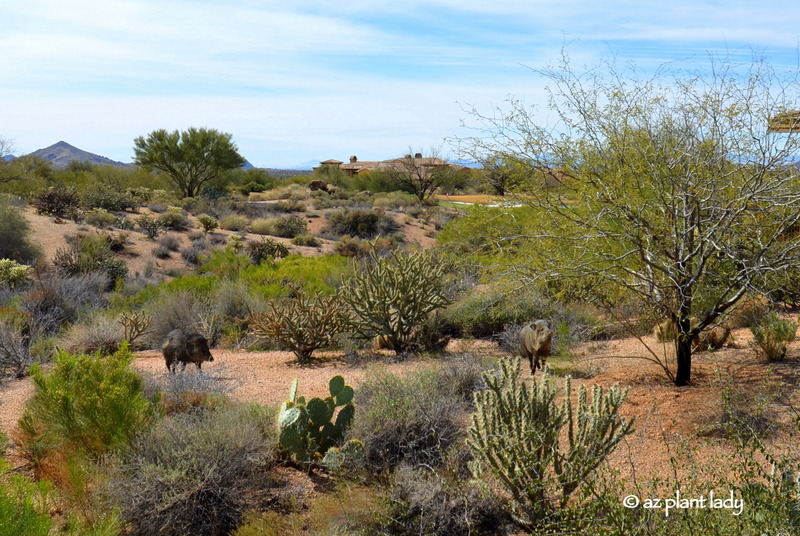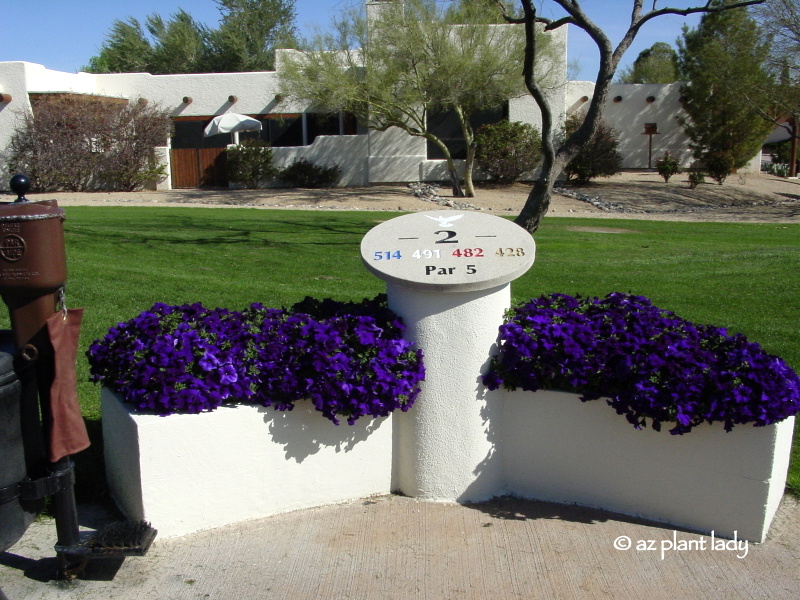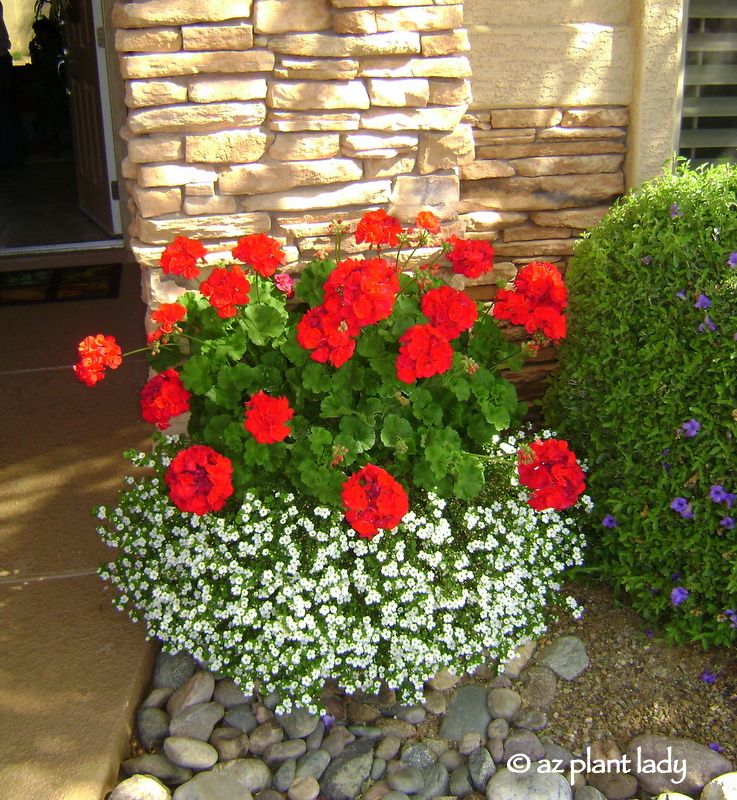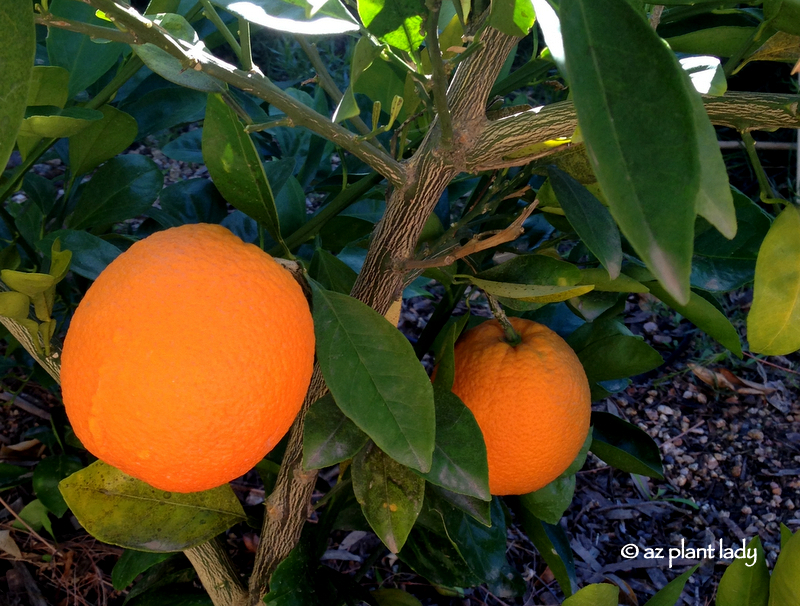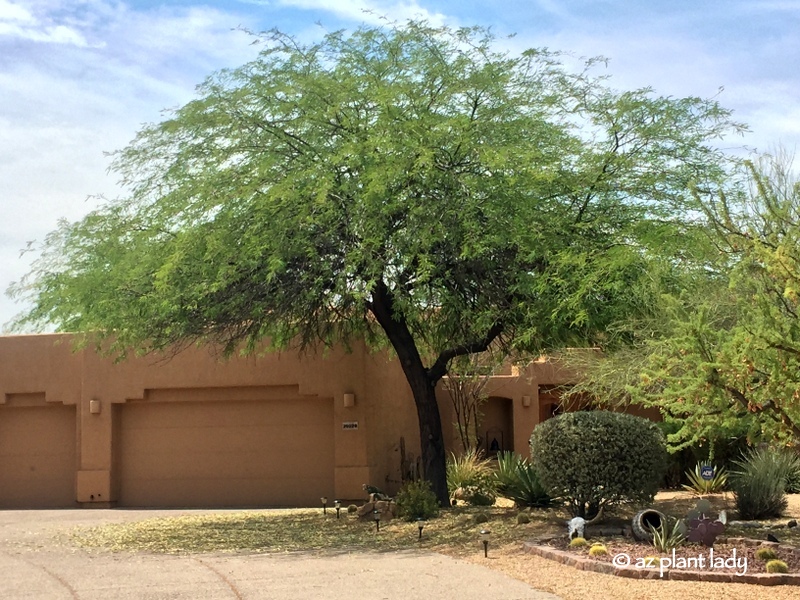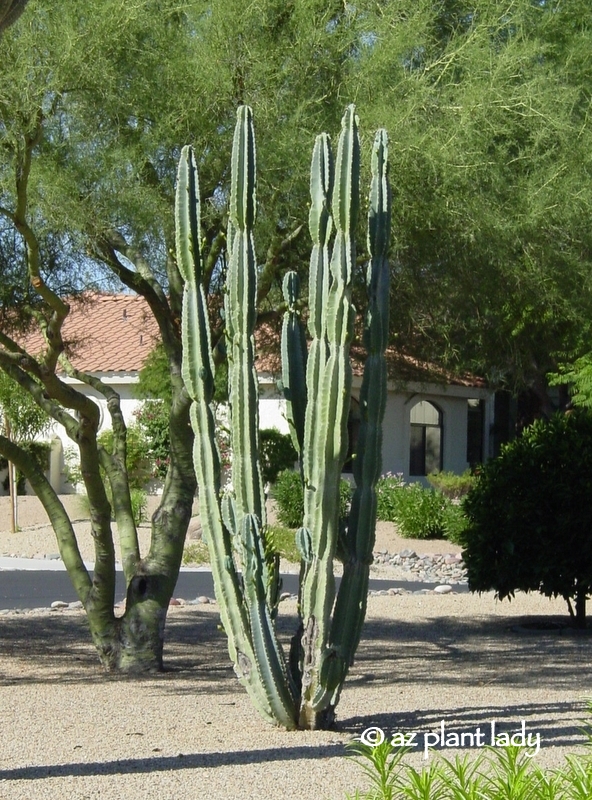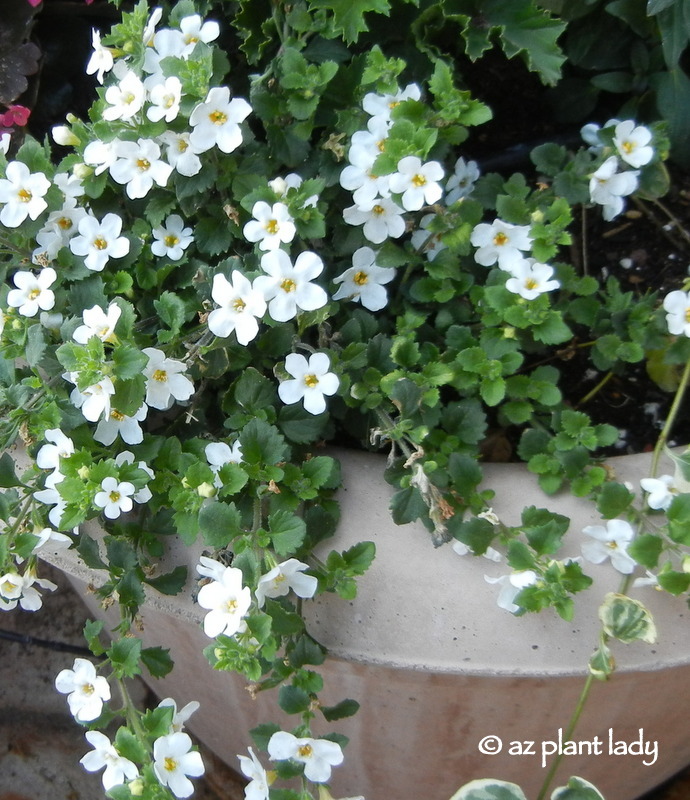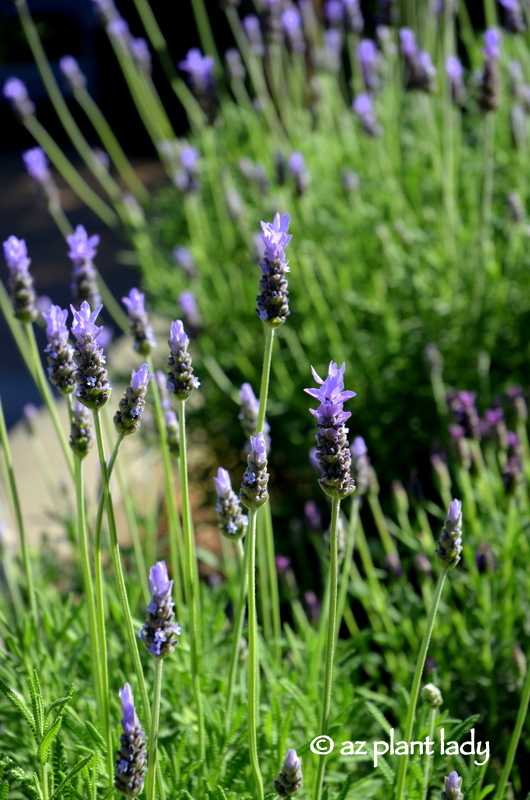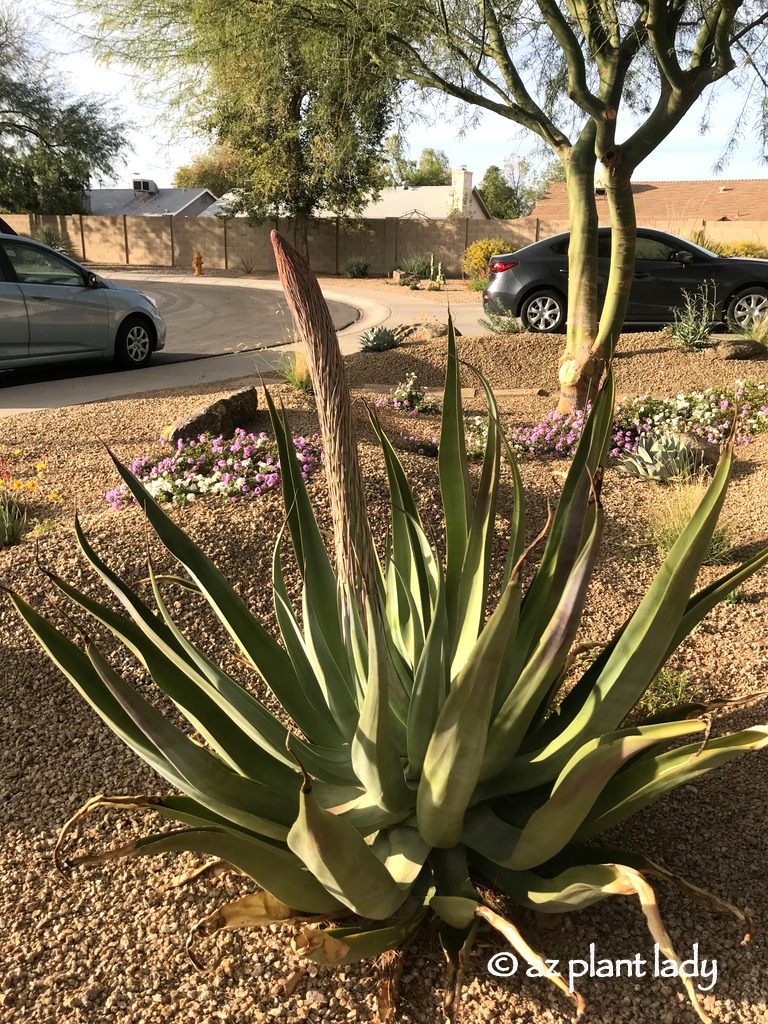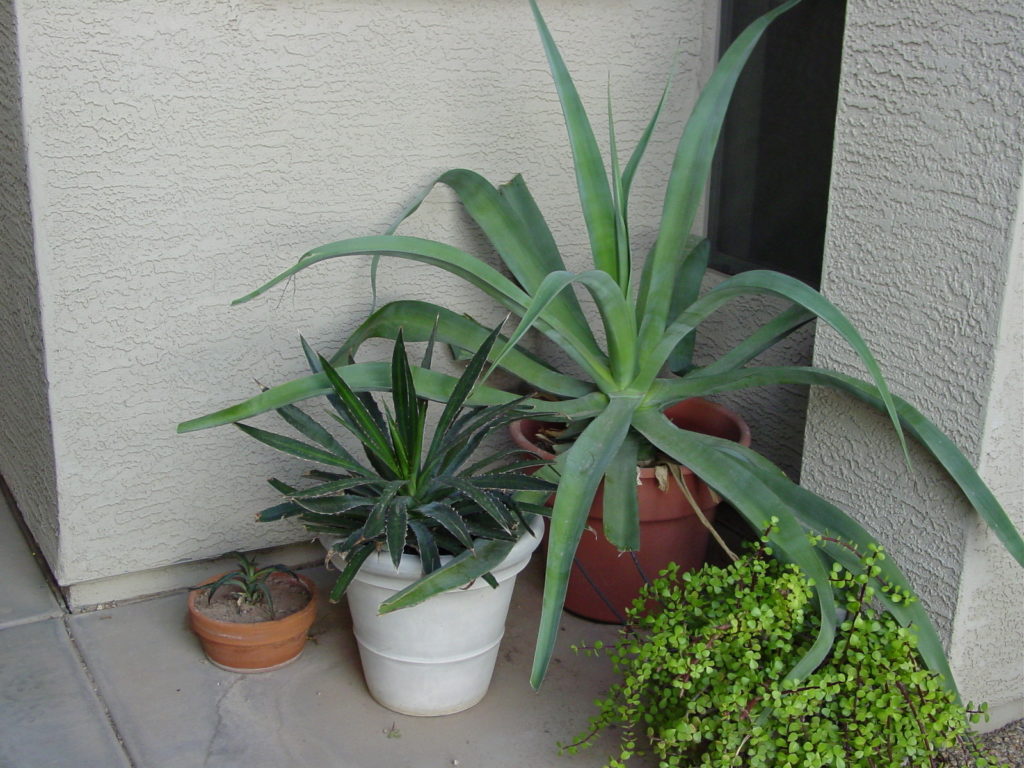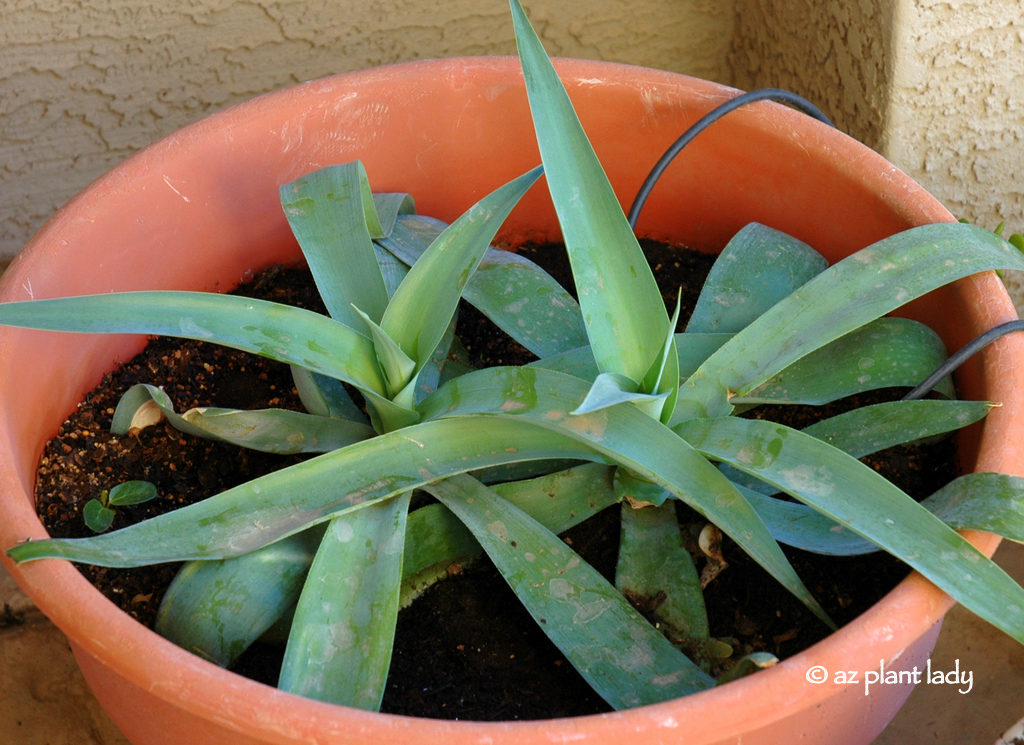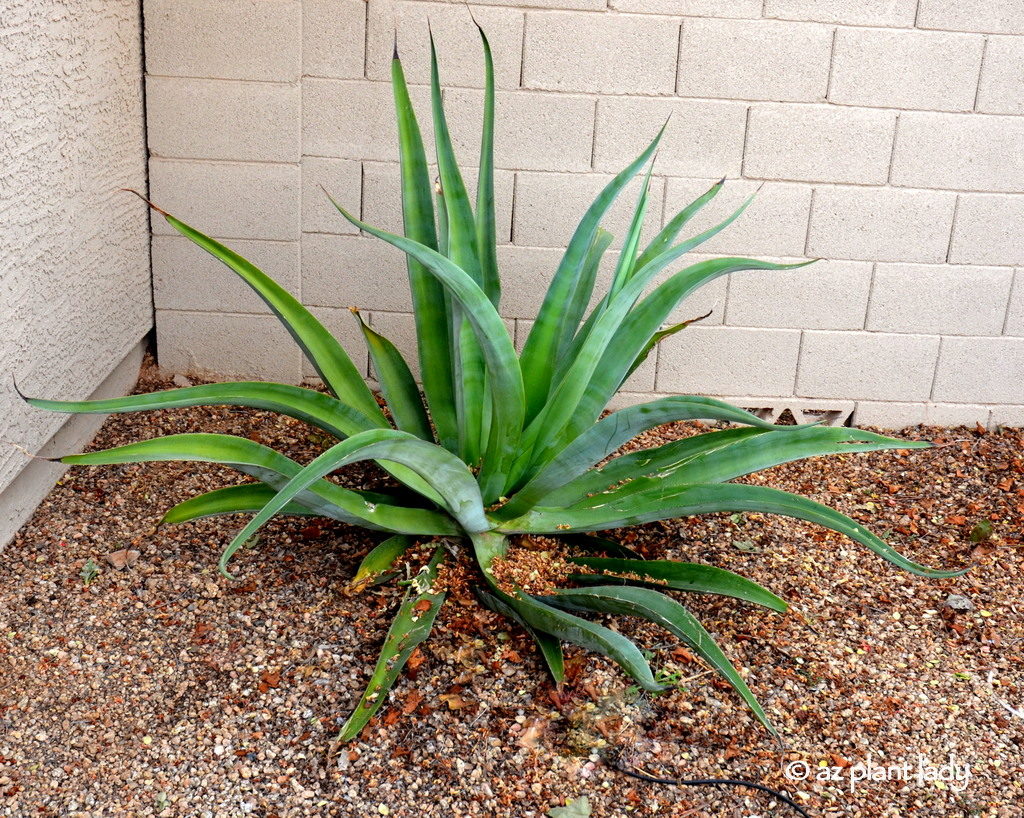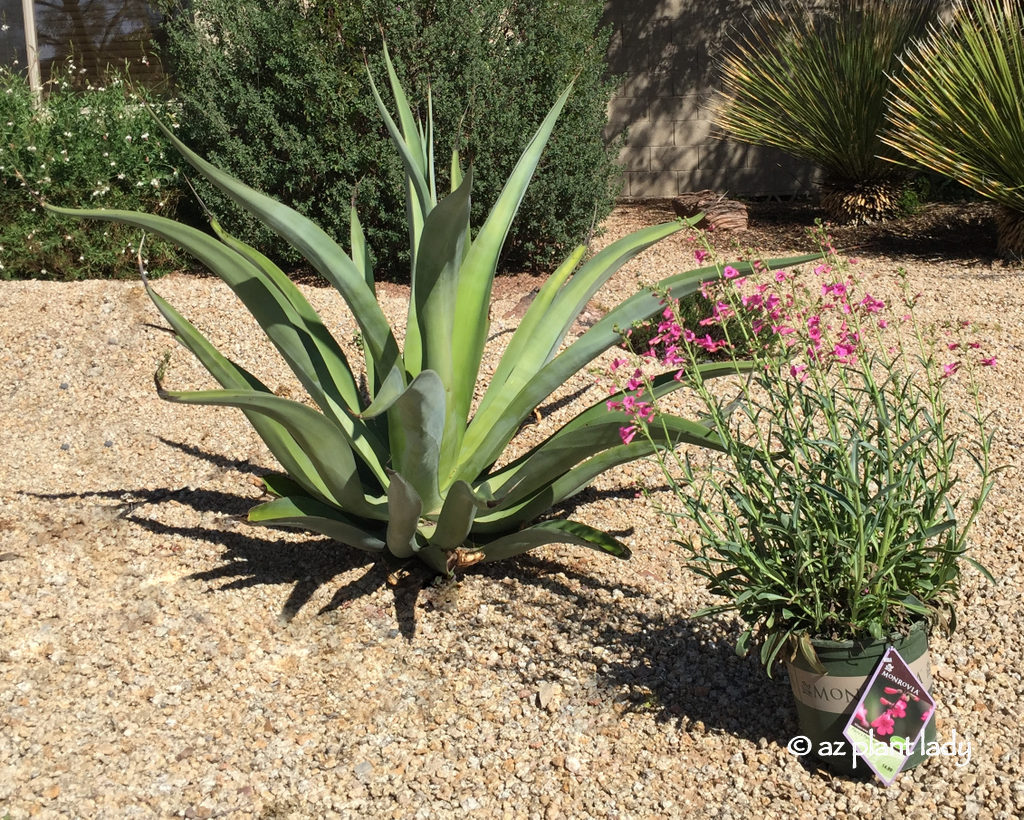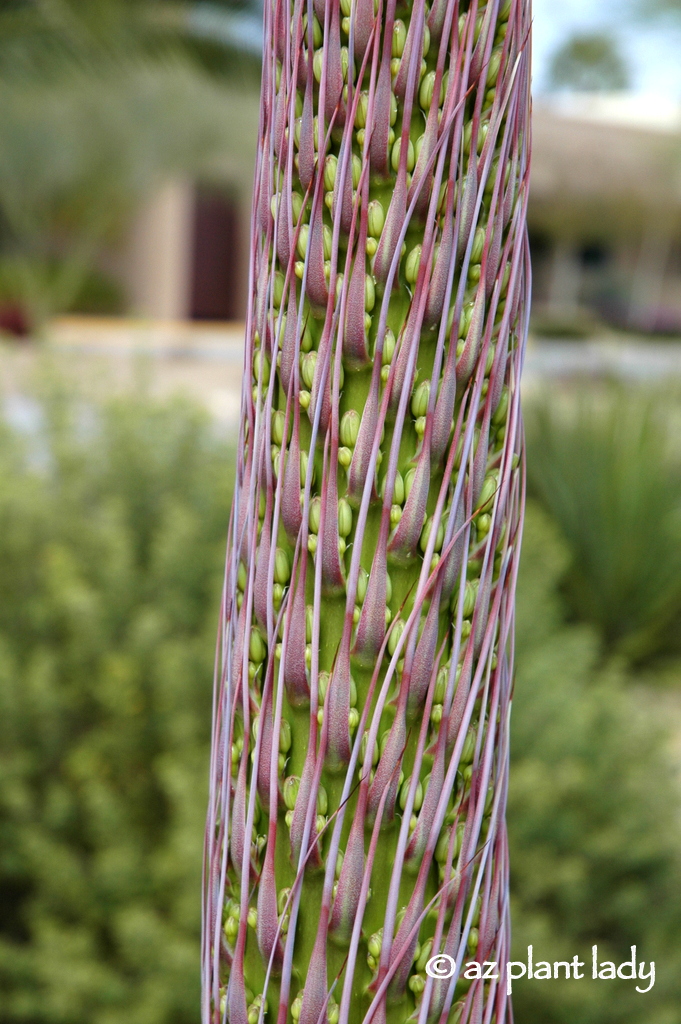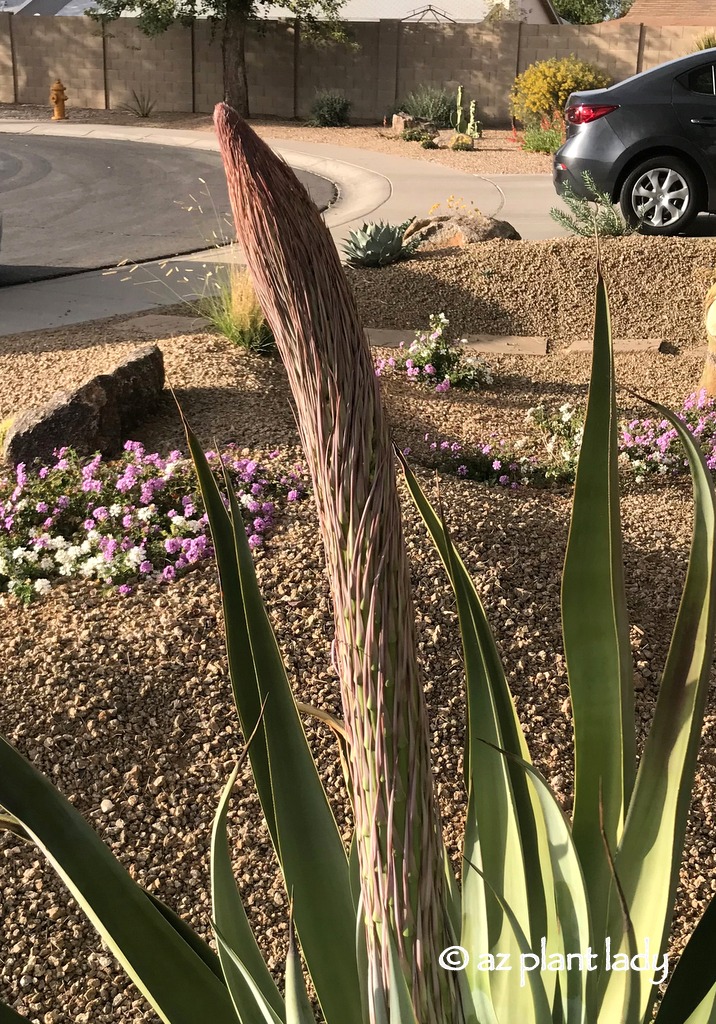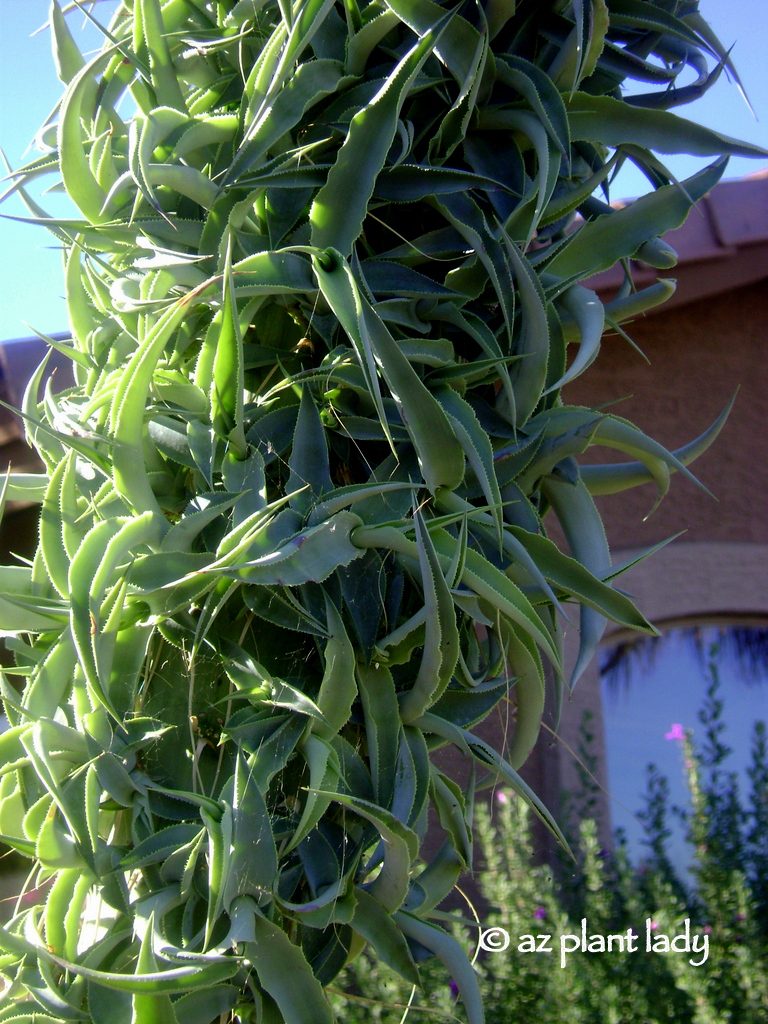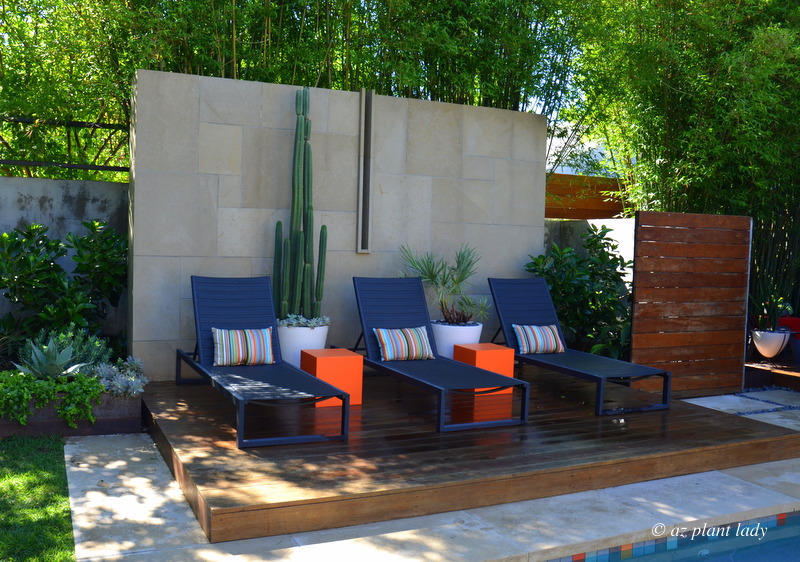
Embrace Modern Elegance with a Low Maintenance Garden
Discover the Beauty of B. Jane’s Contemporary Landscape
Is your landscape style more free-form and natural. Or do you embrace a more modern, contemporary kind of garden with straight lines and right angles? On a recent visit to Austin, I had the opportunity to visit the home of landscape designer, B. Jane, which looks as if it came straight from the pages of a magazine with its resort-style design. If you had a garden like this, why leave home? You can vacation at home in a contemporary, low maintenance garden?
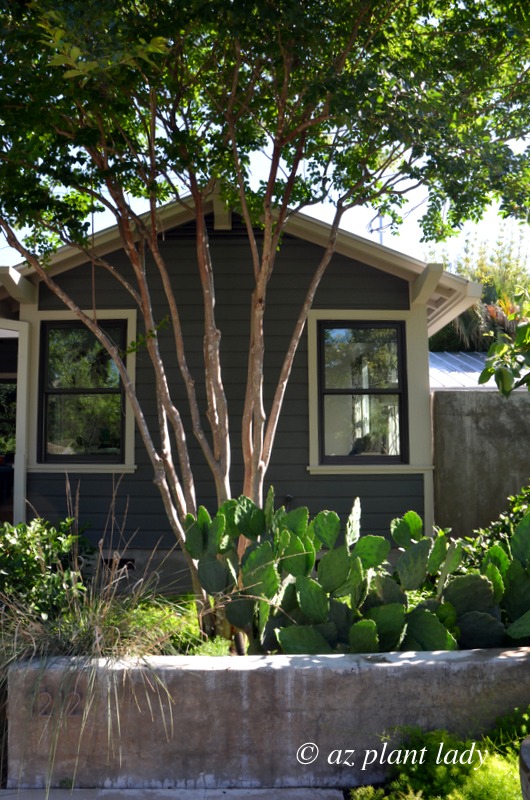
A Front Yard Oasis
The front of B.’s garden has a large crepe myrtle. It is located between her two front windows. This helps to frame her view from the house. The flat pads of a prickly pear cactus add rich texture contrast among the softer shapes of perennials.
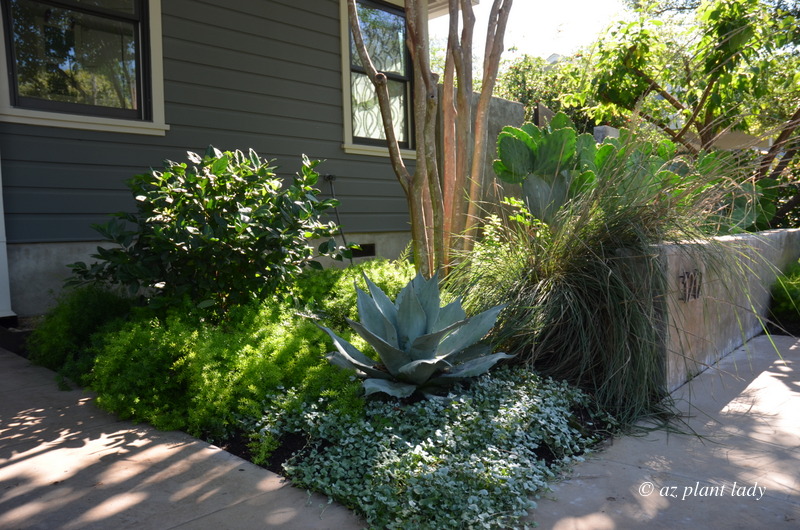
Stylish Groundcover Choices
An agave nestles between asparagus fern and silver ponyfoot (Dichondra argentea). Both plant are ground covers. I often saw at the gardens in Austin. This plant is a type of Dichondra. I liked it so much. Happily, I brought some home and now have it growing in one of my large containers by the front entry. Silver ponyfoot creeps along the ground. It can be used to trail over the sides of pots as well.
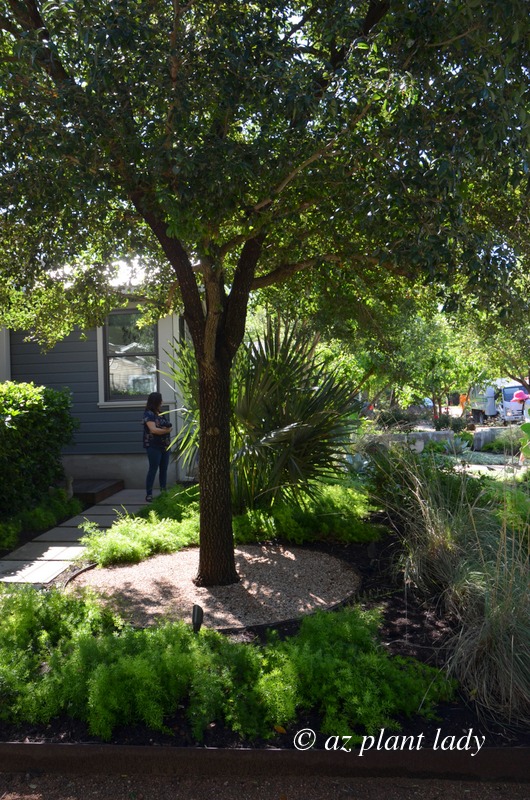
A Modern Twist with Natural Elements
A live oak tree (Quercus virginiana) is planted in a circular section. Decomposed granite works around the tree. Asparagus fern adds softness around the outer edges, again, creating nice texture contrast.
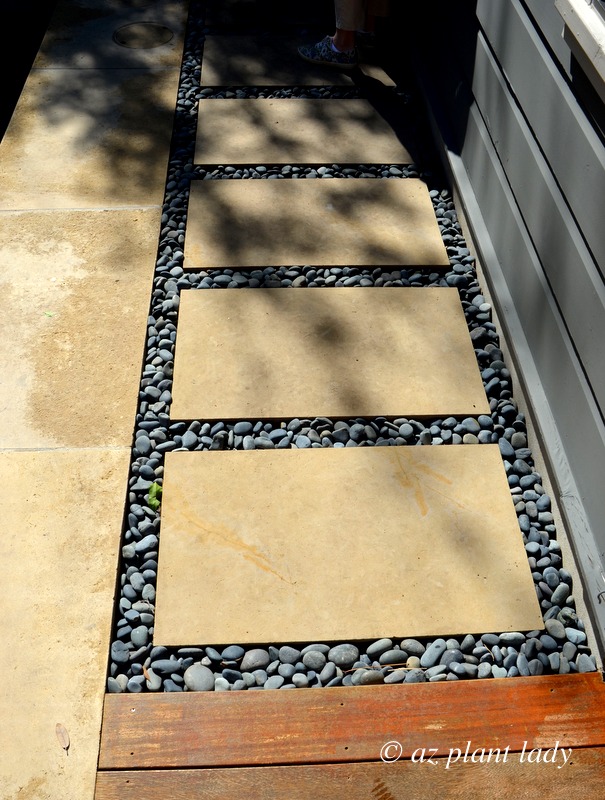
Striking Pathways and Stone Accents
As I walked toward the backyard, the square step stones caught my eye. The dark grey beach pebbles contrast nicely. This is a great design look.
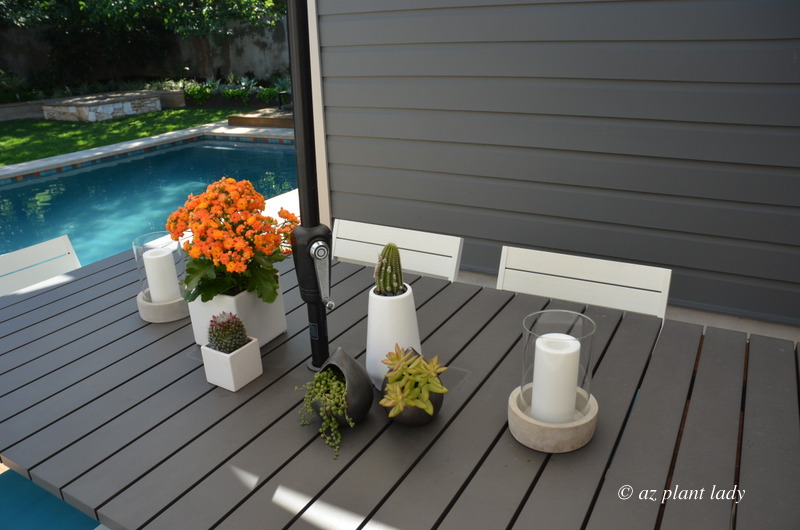
Simplicity and Beauty in Low Maintenance
As you can see from the potted plants on the patio table, simplicity reigns in this garden. This garden is filled with native or adapted plants. They flourish with little fuss. Low maintenance doesn’t mean that a garden is dull. Often the truth is just the opposite as you will see as we continue on our tour.
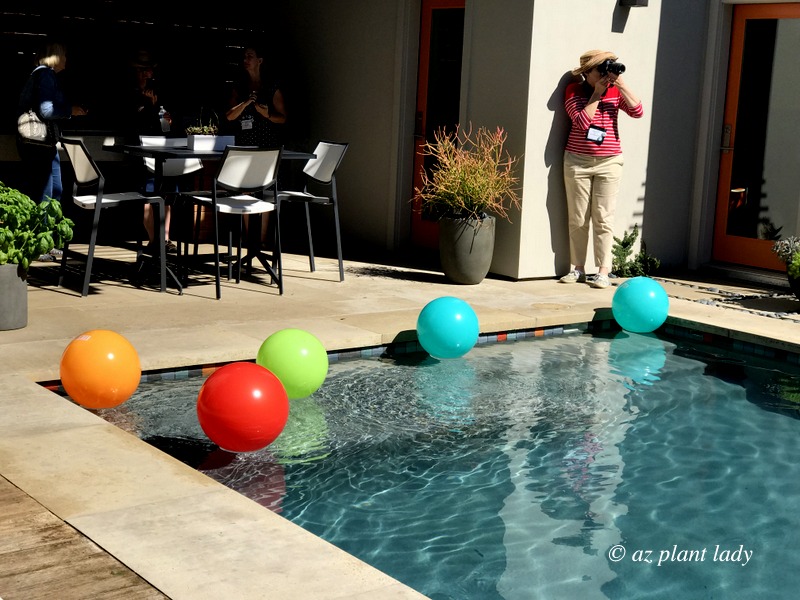
Resort-Style Backyard Retreat
A rectangular pool runs along the center of the backyard. Colorful balls reflect the colors used throughout the landscape. This is a brilliant way to draw attention to the colors. A ‘Sticks on Fire’ succulent (Euphorbia tirucalli ‘Sticks on Fire’) basks in the sun. This is a plant that does beautifully in hot, arid climates.
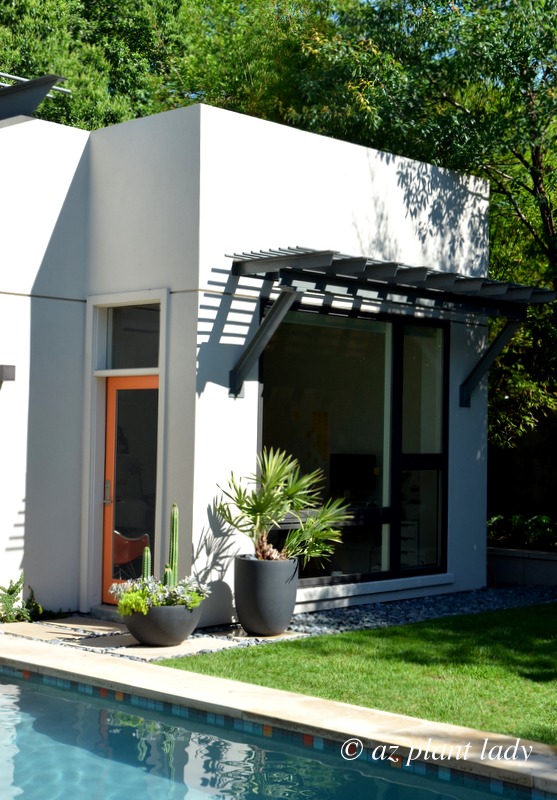
A Garden Office with a View
Now, we are at the point in the tour where I became seriously envious. This is B.’s office. It is separate from her house. She simply walks by her beautiful pool on her way to work in the morning and enjoys a glorious view of her garden while she works. Have I ever mentioned that I work in my dining room. That is, until my kids leave home and I get my own office (room).
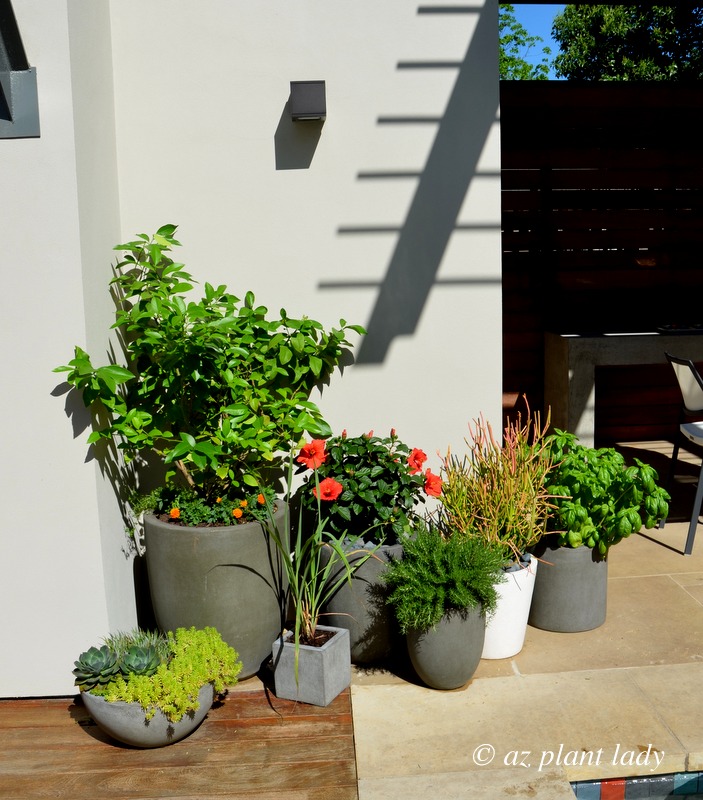
Creative Container Displays
A group of containers filled with a variety of plants including hibiscus, rosemary, and basil. This adds interest to this corner by the pool.
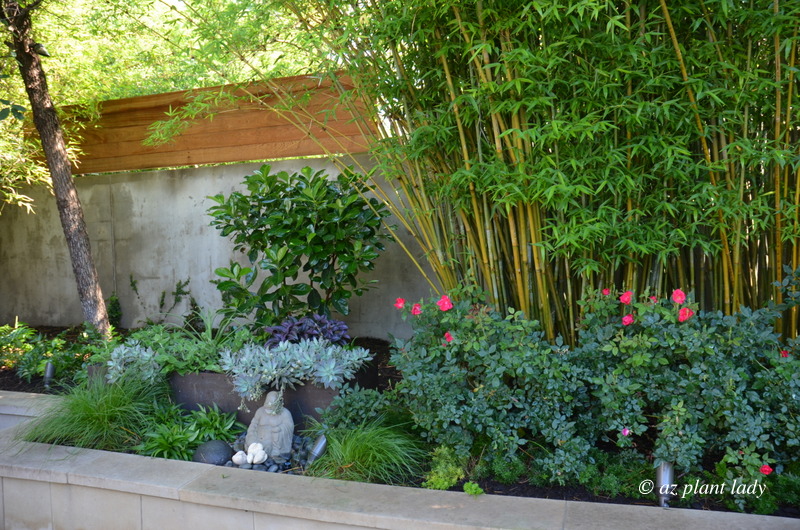
Privacy and Color in the Low Maintenance Garden
Bamboo is used to help provide privacy from neighbors. The shrub roses add a welcome pop of color. It is an unlikely combination that really works.
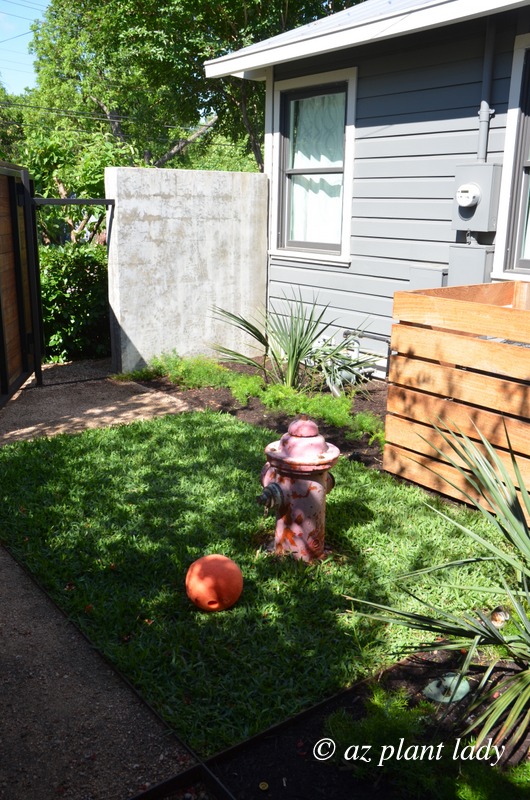
A Garden for Every Family Member
Even the dog has its own space in B.’s garden with a patch of grass and his own fire hydrant!
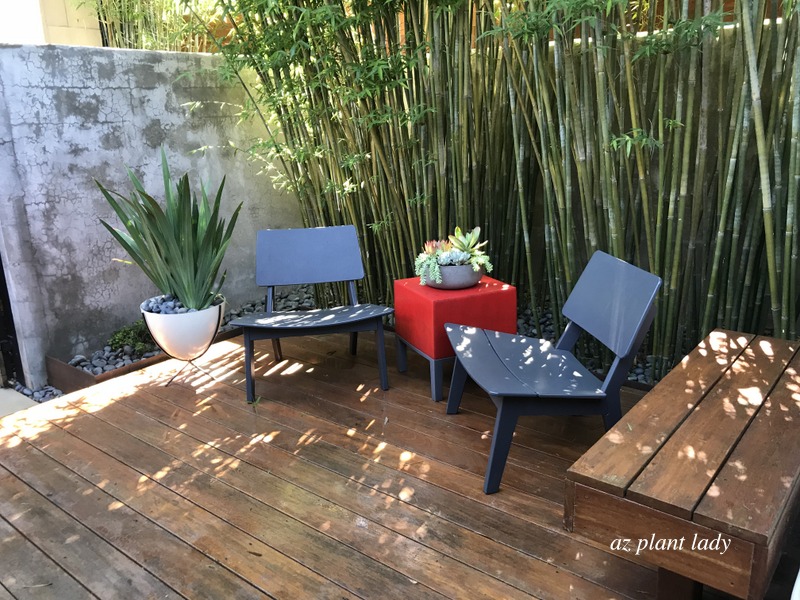
Relax in Style in this Low Maintenance Garden
Isn’t this a lovely low maintenance seating area? I love the splash of red and the bamboo backdrop.
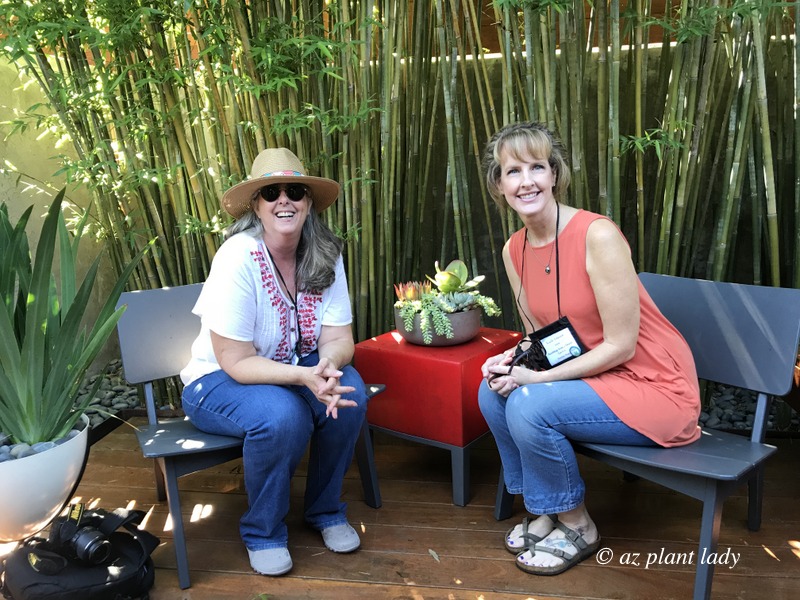
A Contemporary Low Maintenance Garden Oasis
Just the perfect spot to sit with my friend, Teresa Odle. I must admit that I am drawn more toward more naturalistic gardens. I enjoy curves and staggered plantings. My heart does love the contemporary lines of B. Jane’s garden and its resort-like vibe. You can find out more about B. Jane and her creations here.


